Roman Art and Archaeology
1/74
There's no tags or description
Looks like no tags are added yet.
Name | Mastery | Learn | Test | Matching | Spaced |
|---|
No study sessions yet.
75 Terms
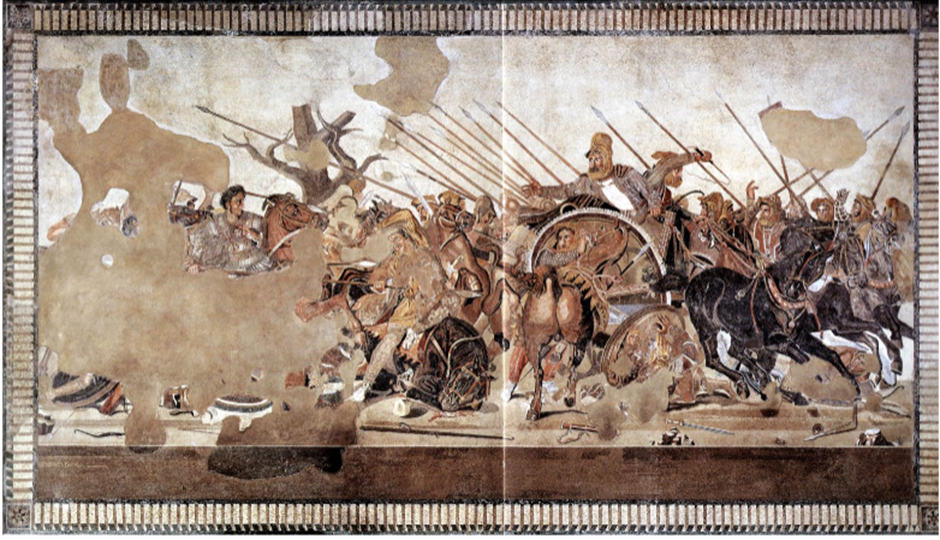
The Alexander Mosaic
Late 2nd c. BC from Italy
Found in an elite office
Subject matter: Alexander at the battle of Issus
Thought to be based off an earlier painting
Demonstration of wealth and cultural understanding and shows roman elites at this time understood the past
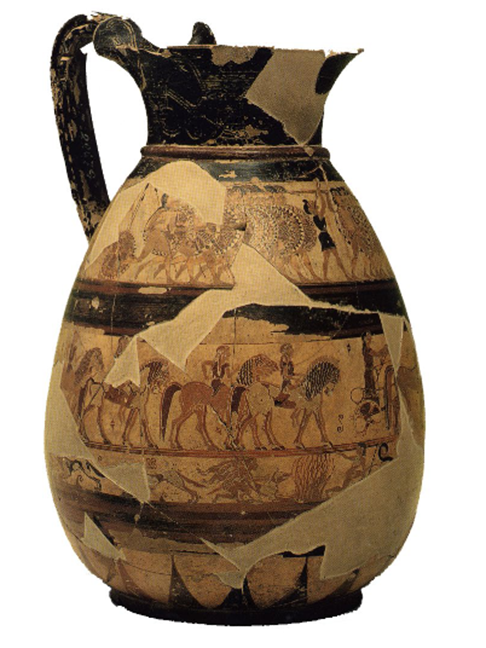
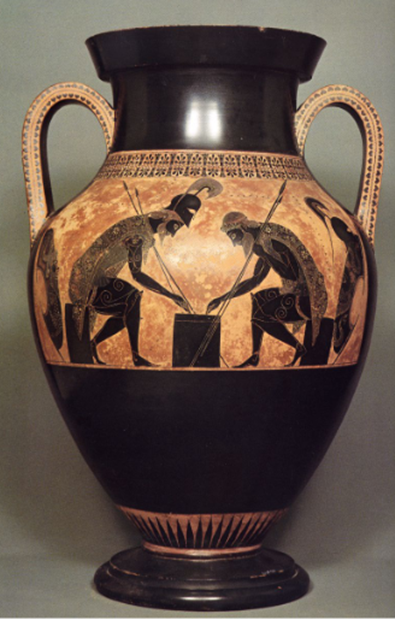
1st = Protocorinthian amphora, 7th c. BC
2nd = Vatican Amphora, 6th c. BC
Both found in Italy but of Greek production
shows Italian import and consumption of Greek visual culture
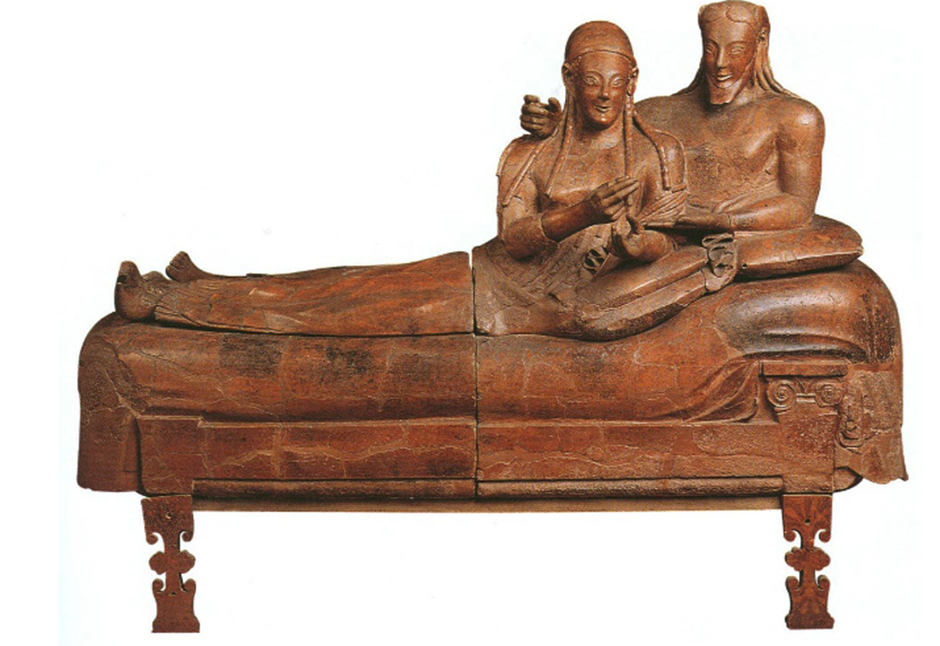
Sarcophagus of the Spouses, 6th c. BC
Etruscan object
Hair and faces show similarities with contemporary Greek art
Shows the pooling of Greek and Etruscan visual cultures
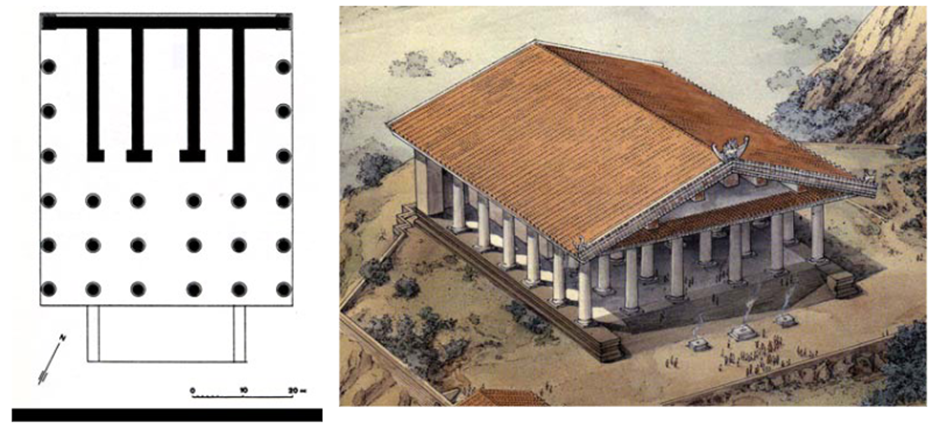
Temple of Jupiter Optimus Maximum in Rome c. 500 BC
Built in the blended style of contemporary Greek and Italian architecture
Greeks would’ve recognised this as a temple
Cicero’s letters to Atticus
Shows elites actively purchasing Greek art
Uses a greek word to describe a part of his villa
Tells us about the way elites thought about Greek art
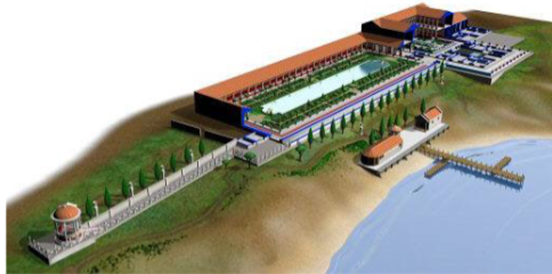
Villa of the Papyri, Herculaneum
Housed a great library (mostly philosophical works) and sculptures
Roman houses were places of performance
shows that roman culture was influenced by greek culture
library demonstrates his knowledge
Contained sculptures of Greek Kings and generals of the past and also philosophers
Garden contained statues of Greek masterpieces adapted for a roman domestic context
State monuments
Monuments put up by the state to celebrate the emperor
Approved by the state
emperor decides what is communicated and where
carefully controlled images conveying deliberate messages and encapsulating virtues
designed to be legible to a wide section of the population
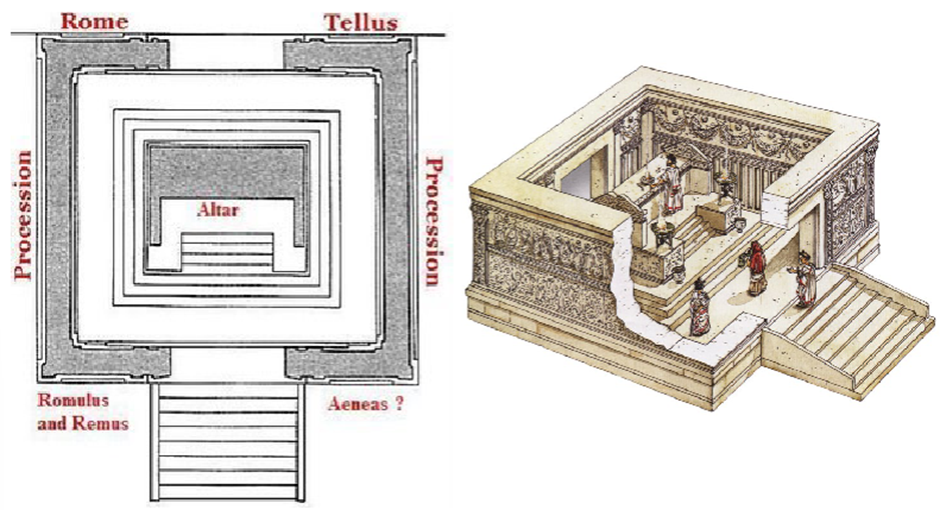
Ara Pacis Augustae vowed 13BC and dedicate 9BC
Set up next to a main road
next to a sundial - religious connection
Was a functioning altar - people would’ve seen the imagery whilst honouring the gods
Connection between religion and state messages
Vegetation on the lower half symbolises a world free from civil war that can now grow again
Reliefs showing rome’s origins - Augustus wants to be remembered as reforming the city

Processional relief on the Ara Pacis Augusta 9BC
Priests and imperial family
Figures arranged as if queuing - no chaos, fighting = peace
Augustus slightly taller
Imperial family first - shows new hierarchies
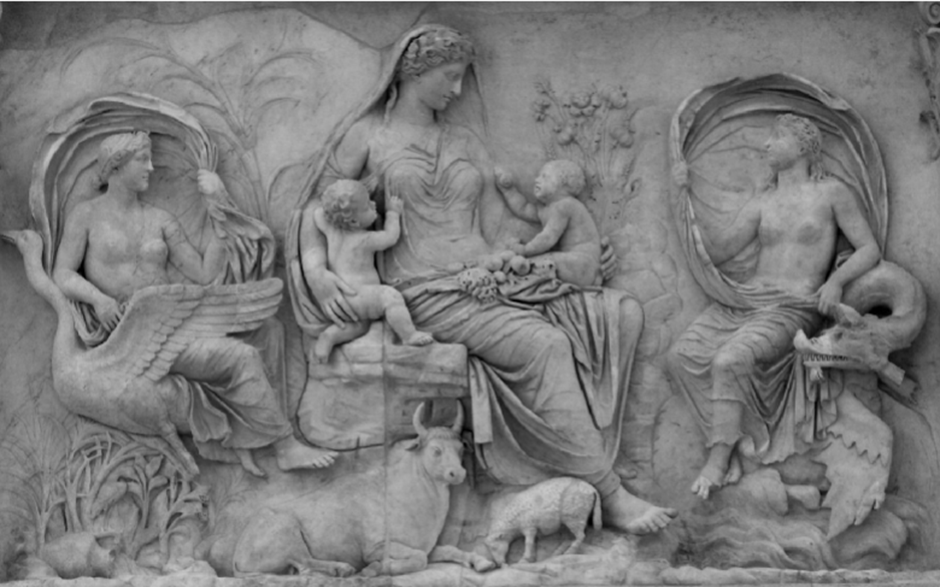
South east panel on the Ara Pacis Augustae - 9BC
Tellus?
Woman with two babies (Romulus and Remus) in abundant landscape amongst allegorical figures
shows fertility and abundance
Message that Augustus has brought about an era of abundance and prosperity
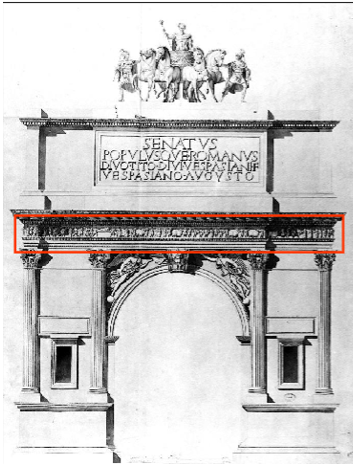
Arch of Titus, 1st C. AD
Put up by Domitian
celebrates Titus’ victory over Jewish revolts (shows Dom. saw this as the highpoint of his career)
Includes winged victories
shows the emperor on the back of an eagle - emperor as god
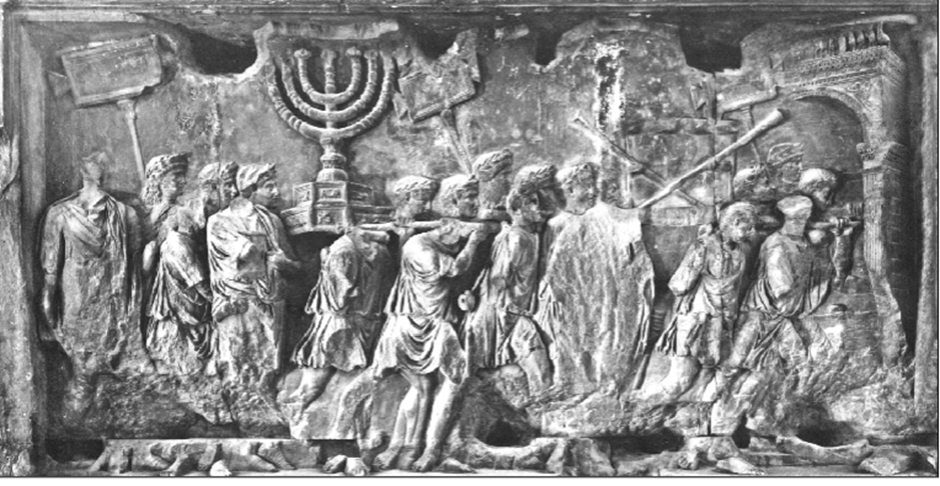
Scene of triumph from the Arch of Titus, c. 1st c. AD
Shows Roman soldiers carrying a menorah in triumph
every roman would know this was the Jewish triumph
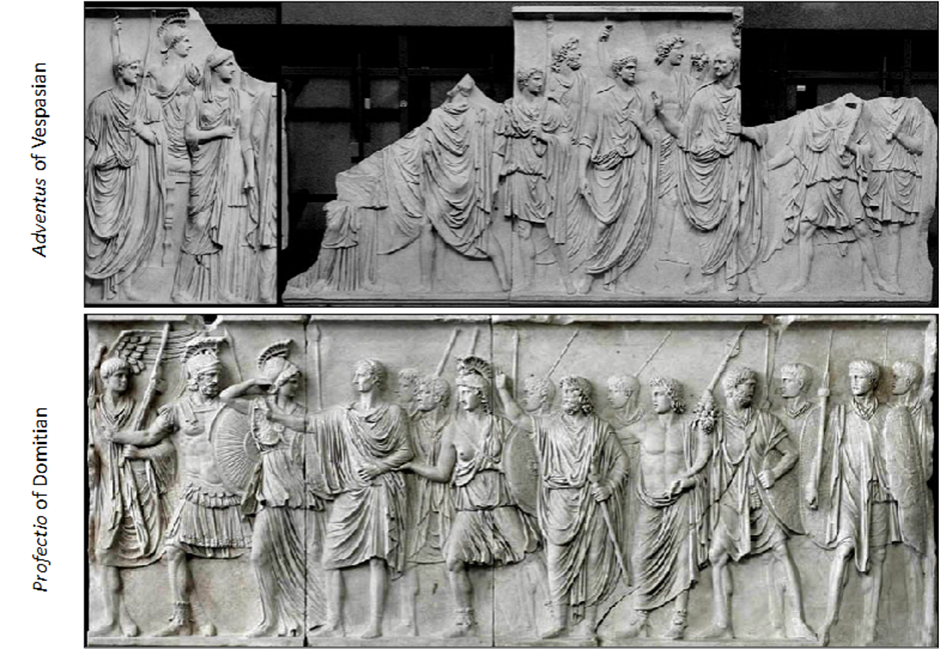
Cancellaria reliefs, from lost Domitianic monument 1st c. AD
Was recarved into Nerva - emperor being recarved shows the messages emperors wanted to convey were often the same
contain real-life and allegorical figures
Shows deities encouraging the emperor to go off to fight with senate and people waving him off - Dom. was criticised for fighting silly wars - this was probs his response shows he had support
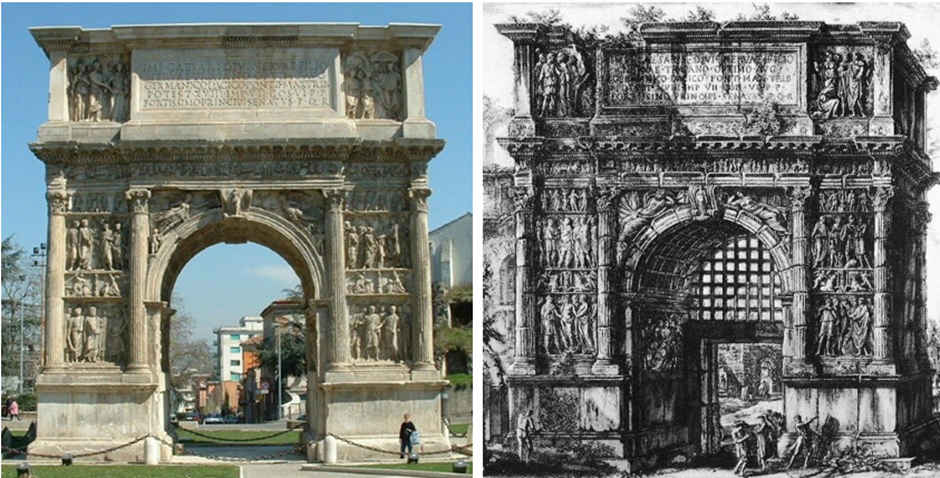
Trajan’s arch at Benevento, 2nd c. AD
Arch built where a new road had been built
depicts civillian and construction themes - shows emperor spending a lot of time building things for his people
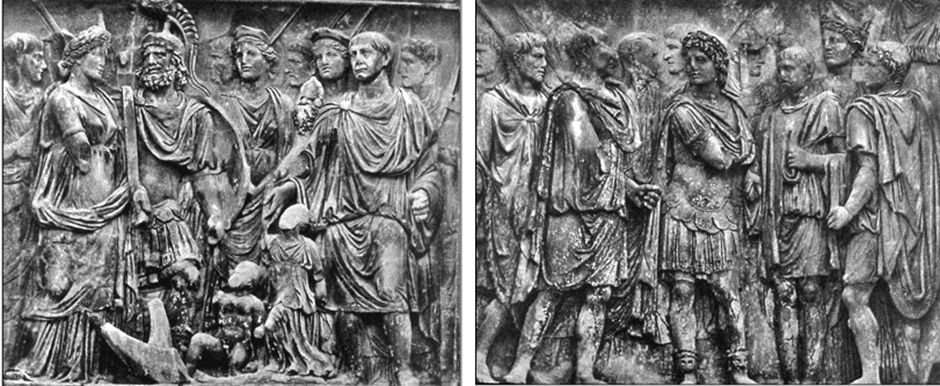
Reliefs from the Arch of Trajan at Benevento, 2nd c. AD
Left: Trajan raises up children as future soldiers - shows Trajan’s policies making Italy a place plentiful of children and therefore military force
Right: Trajan receiving new soldiers
Show how Trajans policies benefitted ordinary Italians
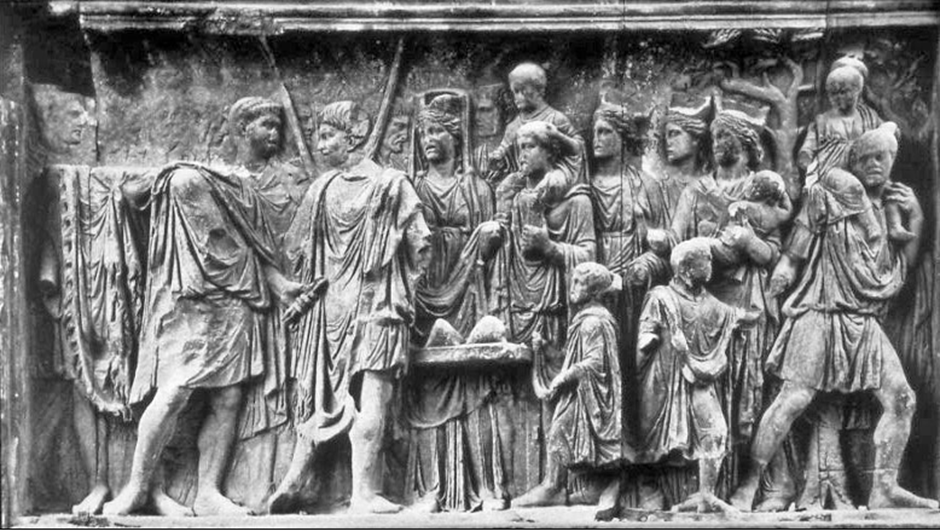
Relief from the Arch of Trajan at Benevento, 2nd c. AD
Shows distribution of alimenta funds for the support of children
Women wearing crowns represent cities - show that what is happening here is happening in many places
Alimenta - Trajan gave loans to struggling rural italians to buy plots of land
If you didn’t know this was happening relief still shows generosity of the emperor
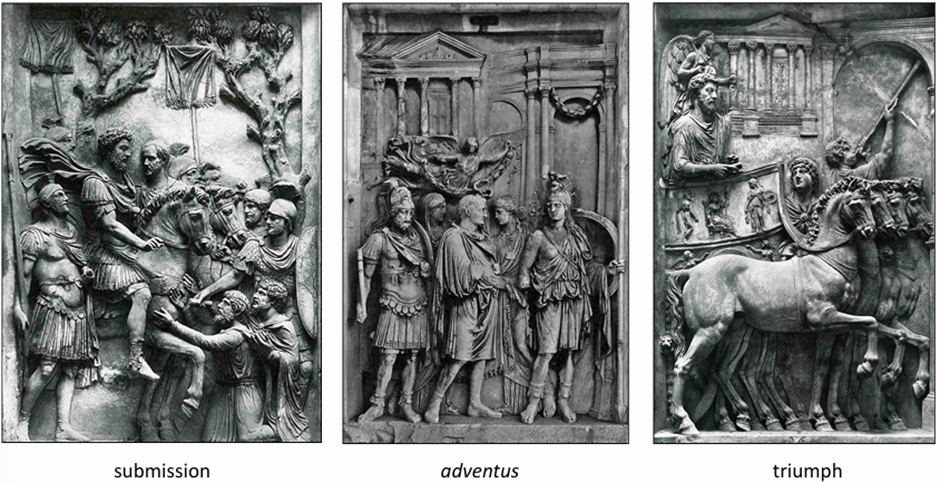
Reliefs of Marcus Aurelius (later reused), 2nd c. AD
Left shows emperor victorius and barbarians submissive
middle shows emperor arriving and being met by mars and victory
right: emperor in triumph
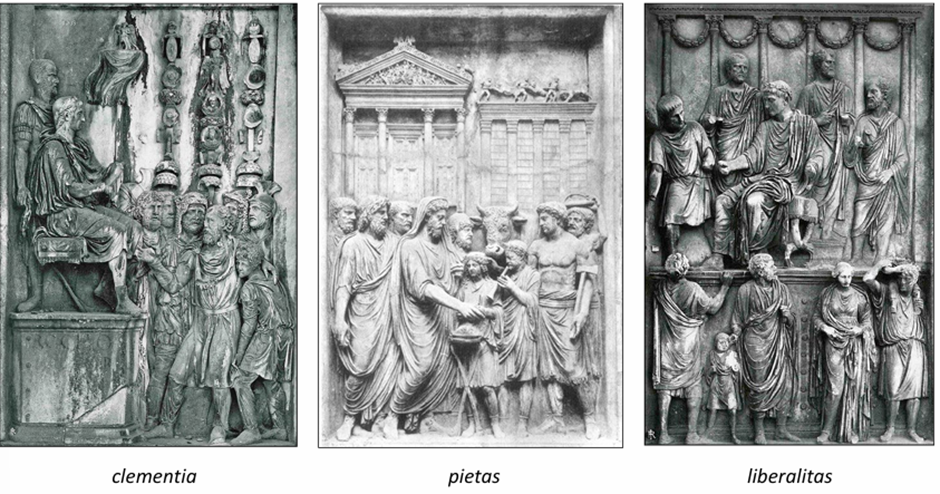
Reliefs of Marcus Aurelius, 2nd c. AD
Shows emperos clementia and generosity and concern for ordinary people
Imperial portraits
Portraits were manipulated to portray values but had to be recognisable
Mostly found on coinage
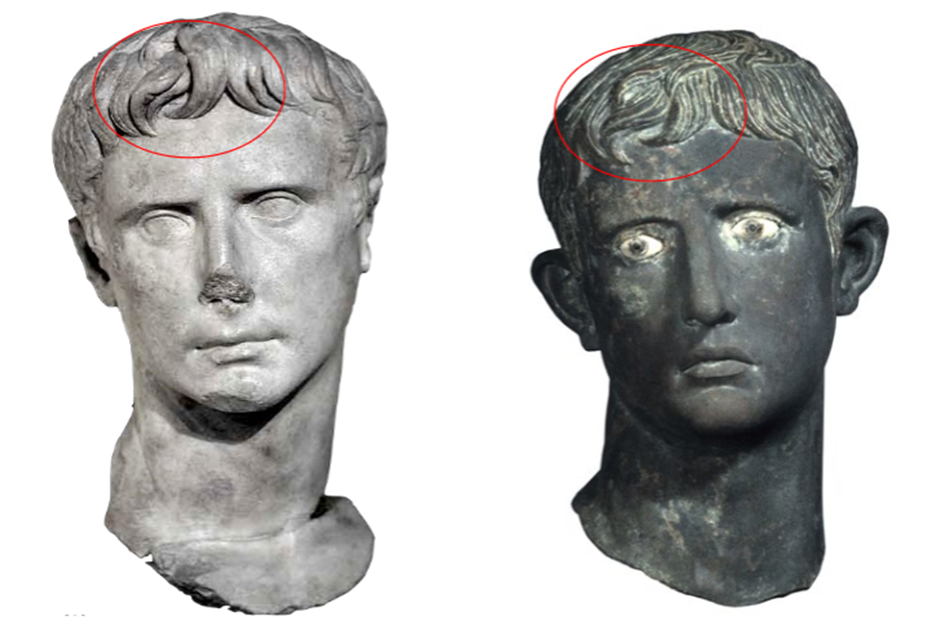
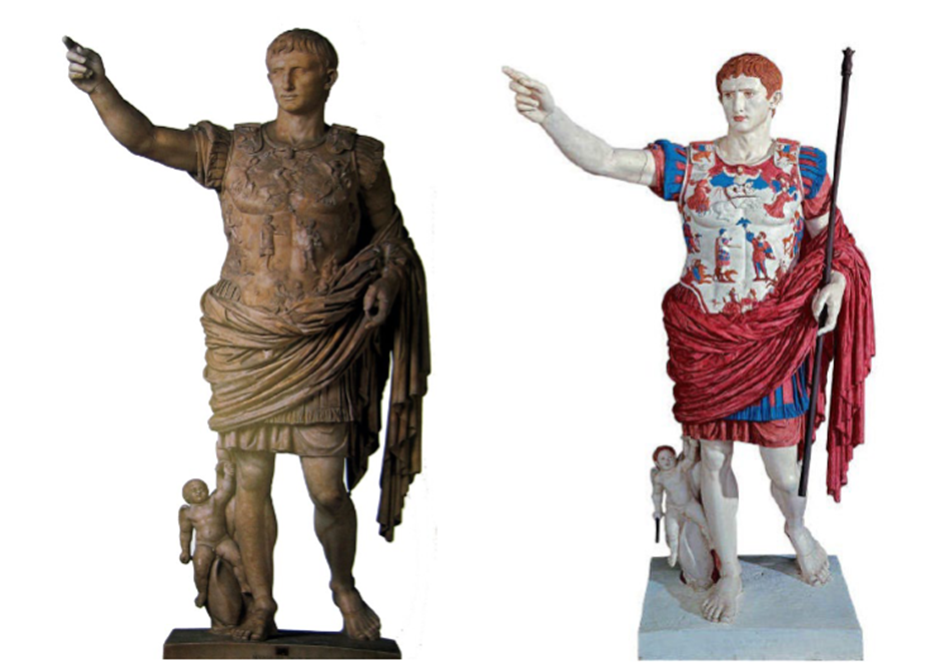
Portraits of Augustus (full length - Prima Porta Augustus)
Augustus created a new style of portraiture - partly cos he was young, partly cos he wanted to show a clean break from chaos of the republic
Hairstyle identifying factor, larger ears
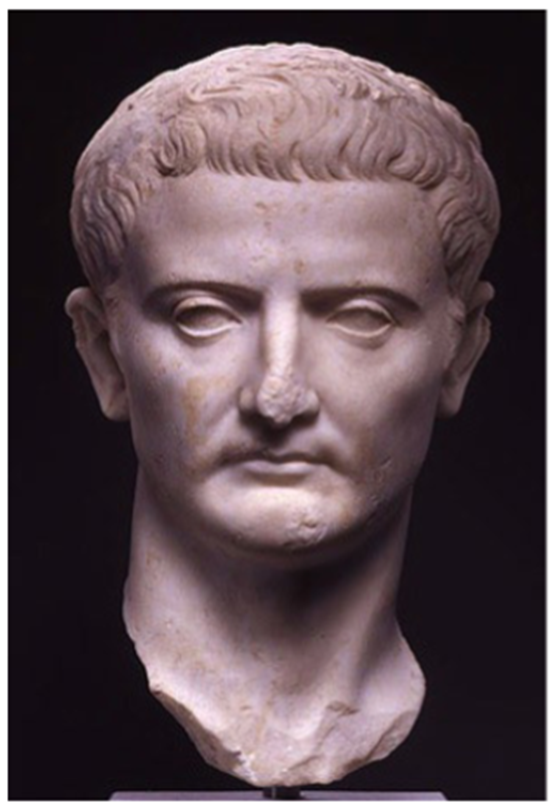
Tiberius’ post-accession type
Tiberius was not a blood relative of Augustus so had to show relatedness in some way in his portraits
Like Augustus Tiberius adopted a youthful, idealised style
SImilarities in his facial features (esp. large ears, nose)
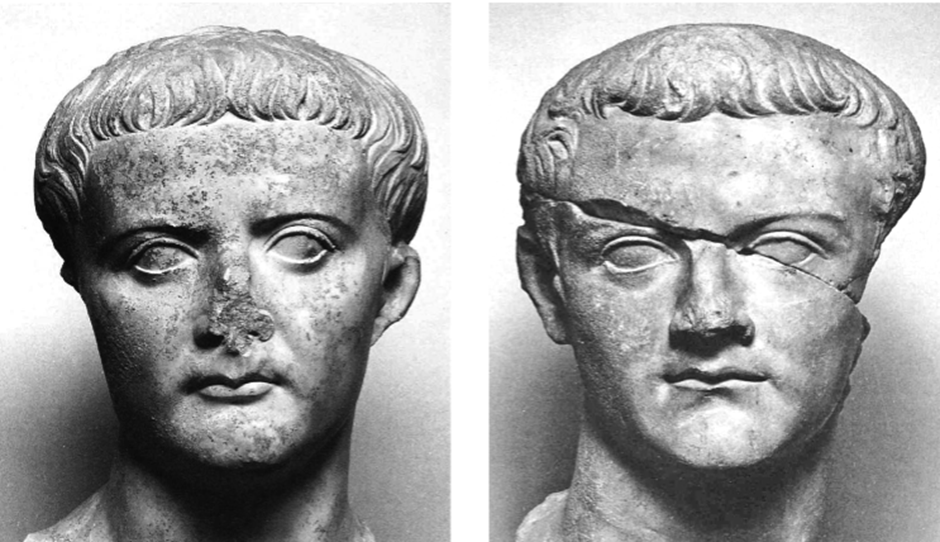
Left: Tiberius, Right: Gaius
Idea of showing similarity became a tradition
Tiberius and Gaius are a good example of this - they were also not related
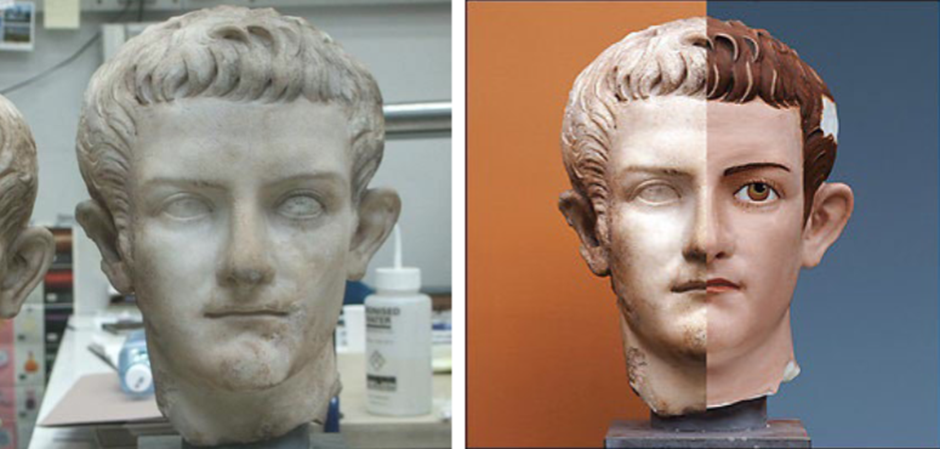
Gaius (Copenhagen)
All portraits would’ve been painted originally which could’ve further been used to show similarity
People have often used this to show his craziness but forget that they would need to apply this to Tiberius too due to the resemblances
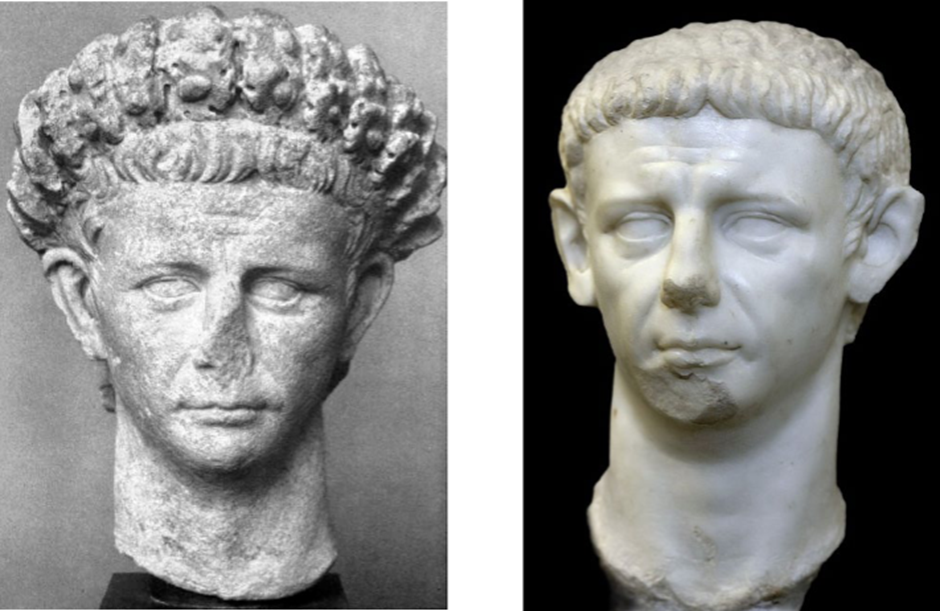
Left: Claudius wearing the corona civica (Copenhagen)'; right: Clauius (Rome)
Claudius was the first emperor forced to show an image different to his predecessor as he was 51 at accession so could’nt pull off the youthful look
Also after the critisiced reign of Gaius he would’ve wanted to portray himself as different
Less idealised portrait but still definitively Julio-Claudian (big ears)

Claudius with the attributes of Jupiter from Lanuvium
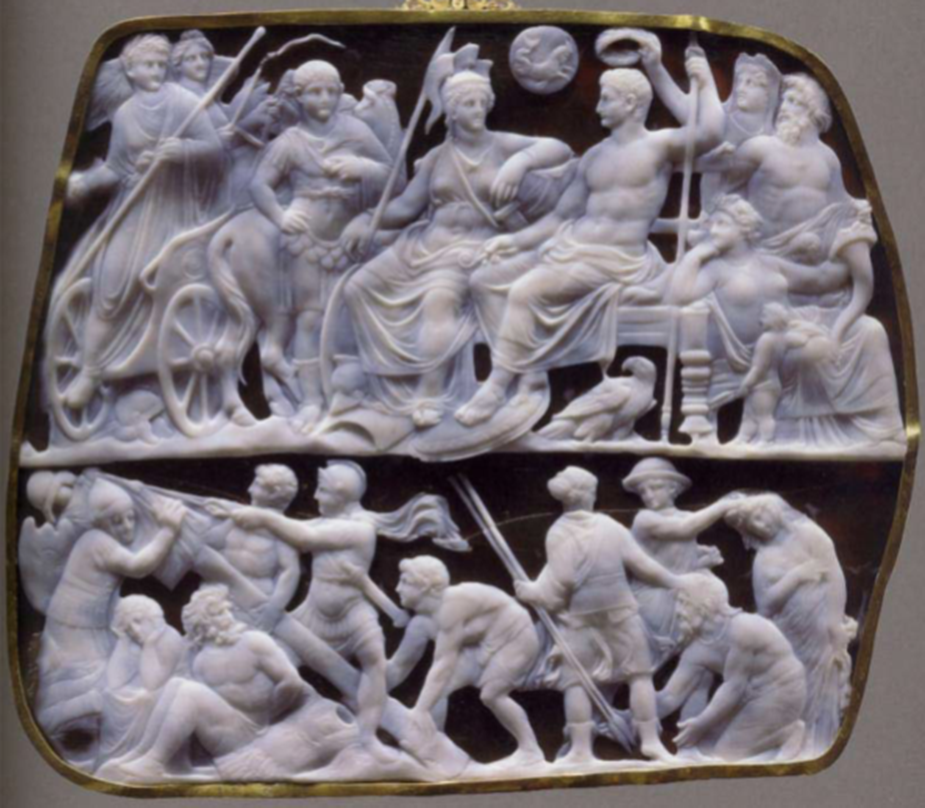
Gemma Augustea, 1st c. AD
High end imagery showing dynastic succession
shows tiberius being delivered to Augustus on a chariot driven by Victory

Nero’s four portrait types
1st type - prince in the imperial household - Julio-Claudian type hair
2nd type - when he became emperor - still youthful, but more distictly Julio-Claudian
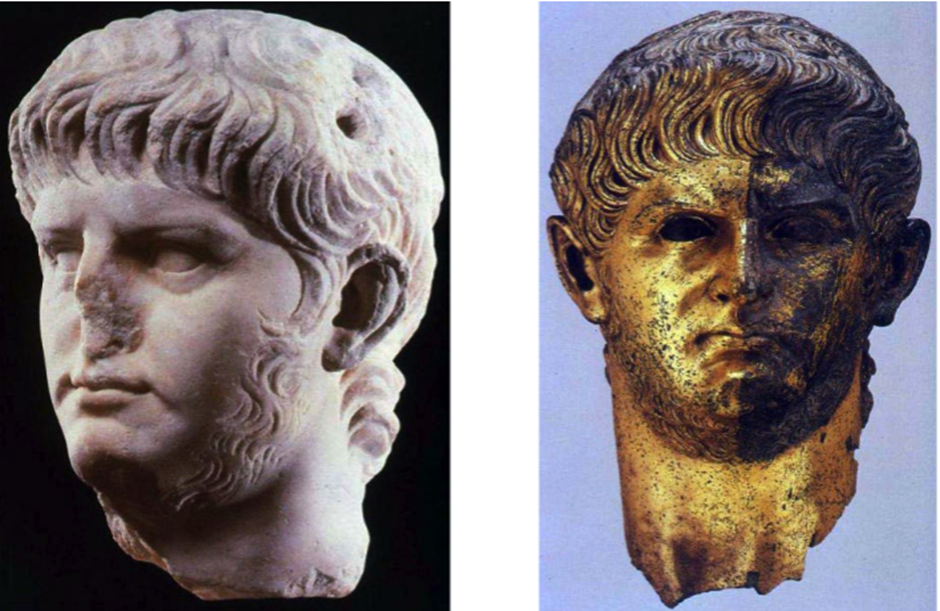
Left: Nero’s type 3 portrait (Rome) Right: Nero’s type 4 portrait in bronze (Atlanta)
Nero was the first to explore facial hair
Image on right is often used to depict him as crazy but we need to remember that he chose to have this circulates so what virtues was he trying to convey: fat - he is well fed, everyone is happy and well fed, beard - similair to Hellenistic portraits
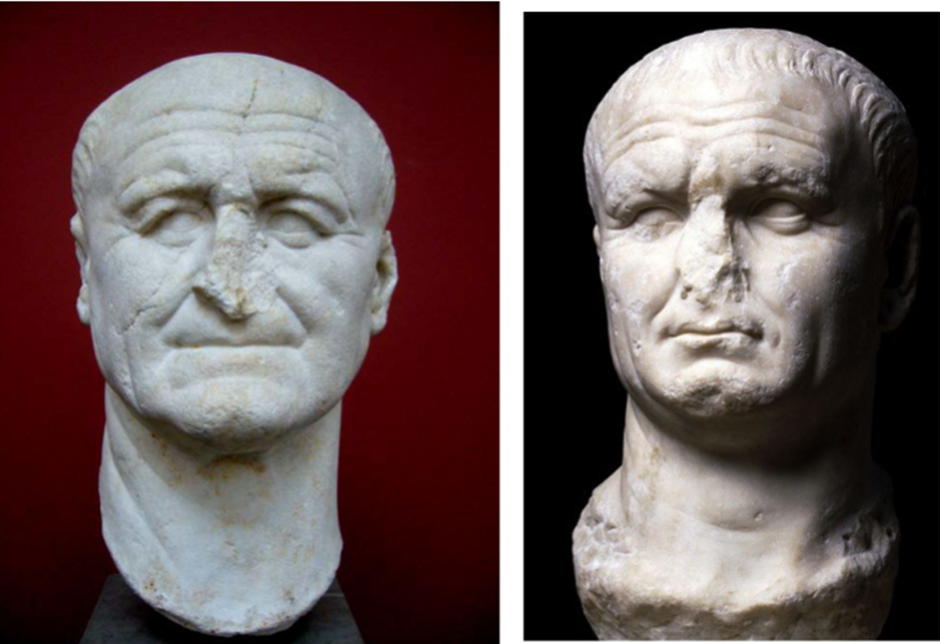
Vespasian - right Copenhagen, left London
Vespasian emerged victorious after the year of 4 emperors but as he did this by withholding grain from Rome and starving them he can’t flaunt his victories (conveniently his son Titus quelled Jewish revolts)
Challenge of portraiture - does he depict himself similair to Julio-Claudians although Nero was so unpopular; he is also 60
Moves back to traditional roman veristic portraiture - away from Nero’s hellenistic flamboyance to his steady, safe, military qualities
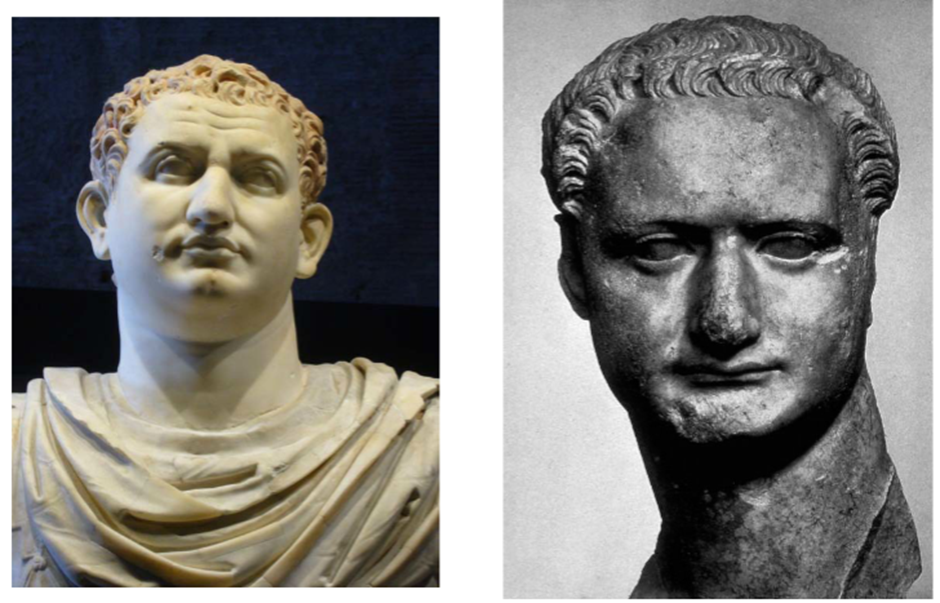
Left: Titus from Herculaneum, right: Domitian, Rome
Vespasian is fortunate as he has two sons
therefore they don’t need to emphasise relatedness on portraits
similair features probs genuine
Titus’ reign was short but successful'
Domitian so unpopular his images were destroyed so we don’t have many examples
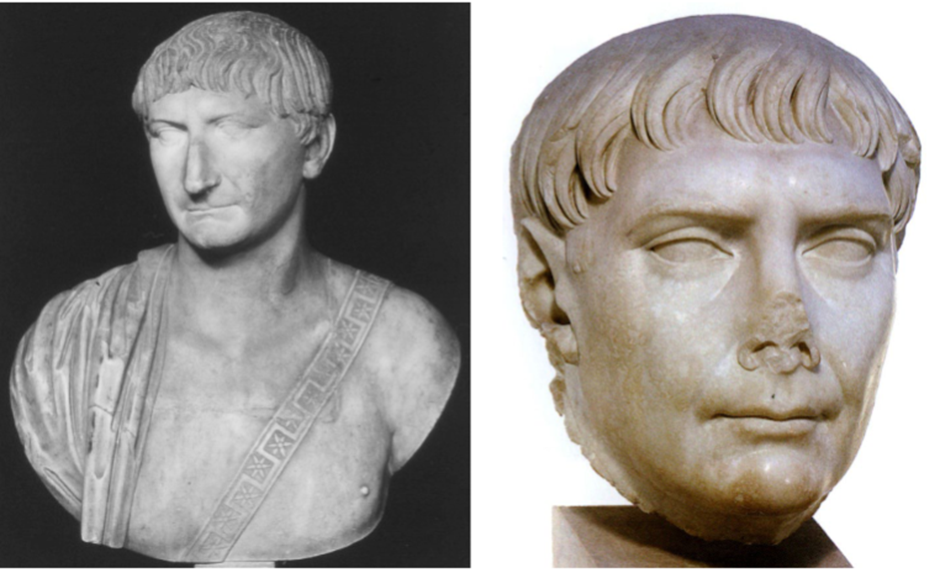
Trajan: left: bust from Rome dateable to his reign; right: posthummous from Ostia
Came to power in 98 in his prime and as a successful military leader, well respected by army and elites and his imagery emphasises this
45 at accession - not interested in youthful portraiture but also doesn’t want to be seen as old
Distinctive hair of the military at this time - wants to show he is comfortable serving in the army as well as being emperor
Left: strap shows he would’ve had a sword if it was full length - militaristic

Hadrian (Rome)
Adopted by Trajan
Hadrian has a distinct portrait type (beard)
Beard: many people in this period were adopting beards (was always fashionable in Greek speaking places) - shows him keeping up with trends and showing he was a man of culture
Resemblances between Trajan and Hadrian show they also wanted to emphasise relatedness
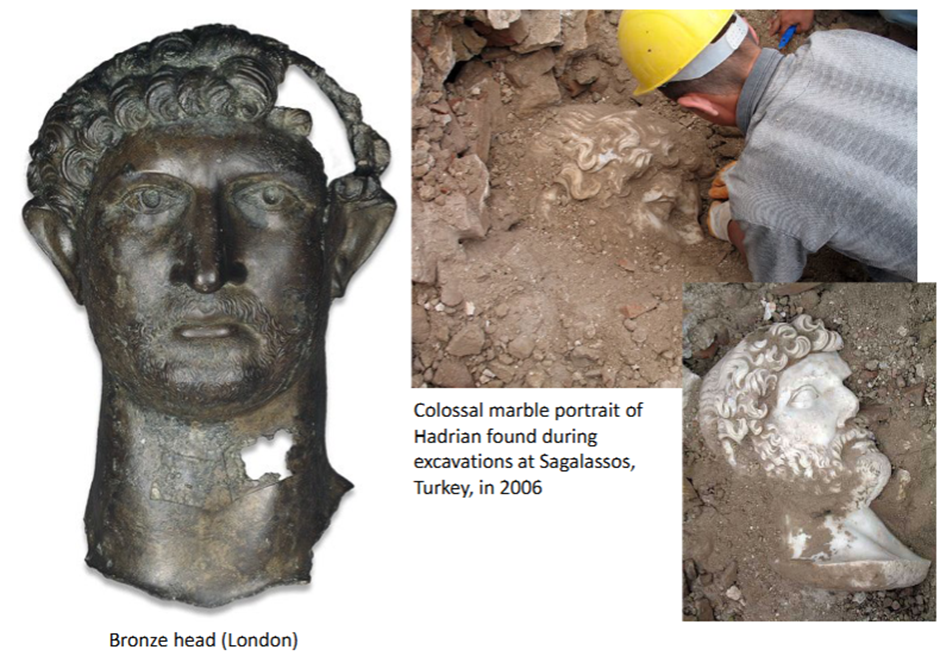
Large number of portraits of Hadrian surviving
found all across the empire - he travelled more than any predecessors and made a point of visitng local cities which would’ve put up statues in honour of his visit
Local statues would’ve been based on official portraits but carry local flavours
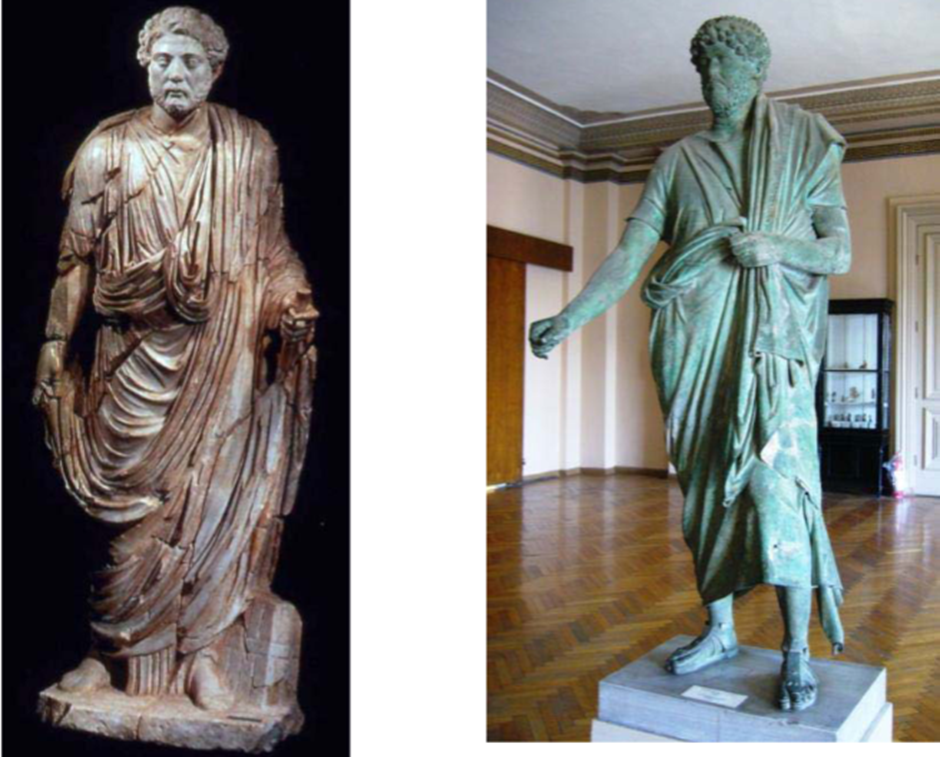
Left: Hadrian wearing a Toga (Tirana); right: Hadrian wearing a himation (Adana)
Toga - uniform of a citizen, what senators wear, shows emperor as law maker - emphasised by his holding a scroll. he is wearing a toga in the eastern part of the empire
Himation - worn in the east to communicate citizenship
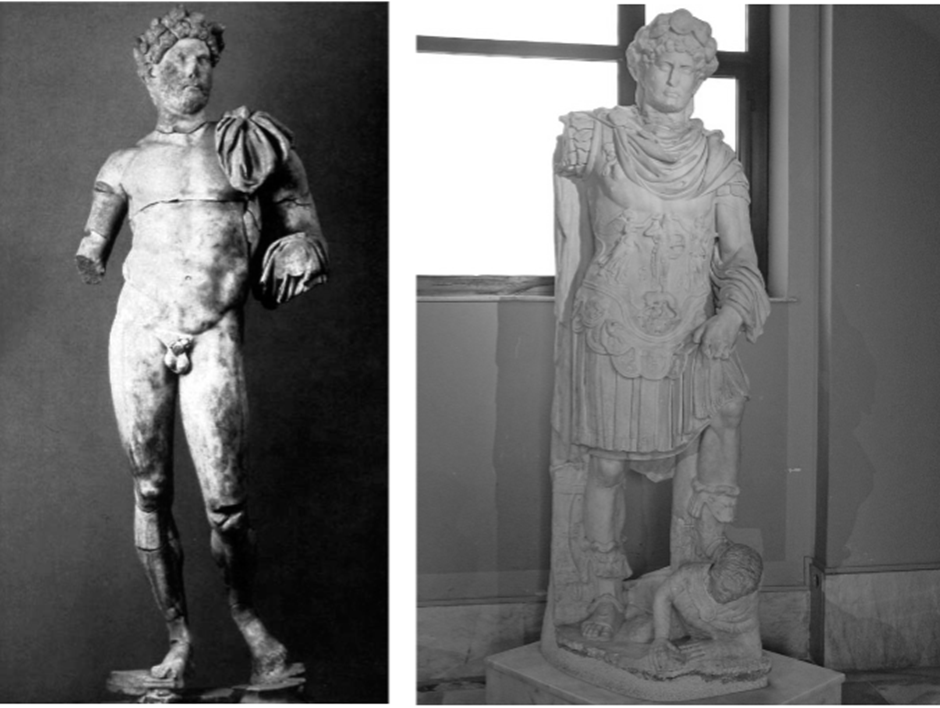
Left: Hadrian nude (Vaison-la-Romaine); right: Hadrian wearing a cuirass from Crete
Left: nude emphasises heroism, athleticism, and proximity to divinity - more common for posthummus statues where emperors are gods
Right: emperor in full military dress, crushed barbarian under foot - not real military uniform but what mars would wear - reference to Hadrian’s patronage of Greece
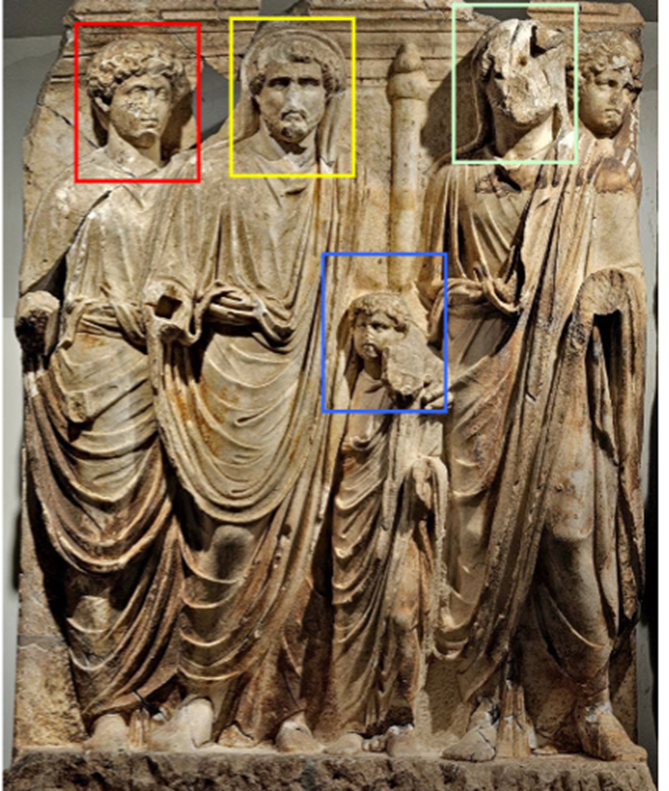
Great Antonine Altra, Ephesus 2nd c. AD
Commemorates the adoption of Antoninus Pius by Hadrian and the adoption of Marcus Aurelius and Lucius Verrus by Antoninus Pius
Shows Hadrian creating a dynasty
Antoninus’ portrait similair to Hadrians
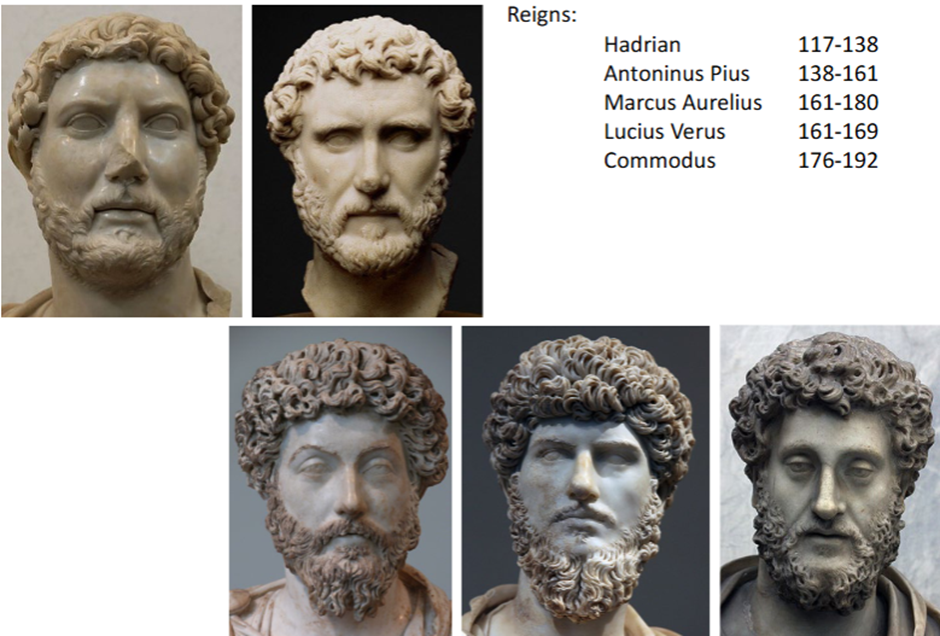
The Antonines show similarities in portraiture to Hadrian, commodus continues this tradition
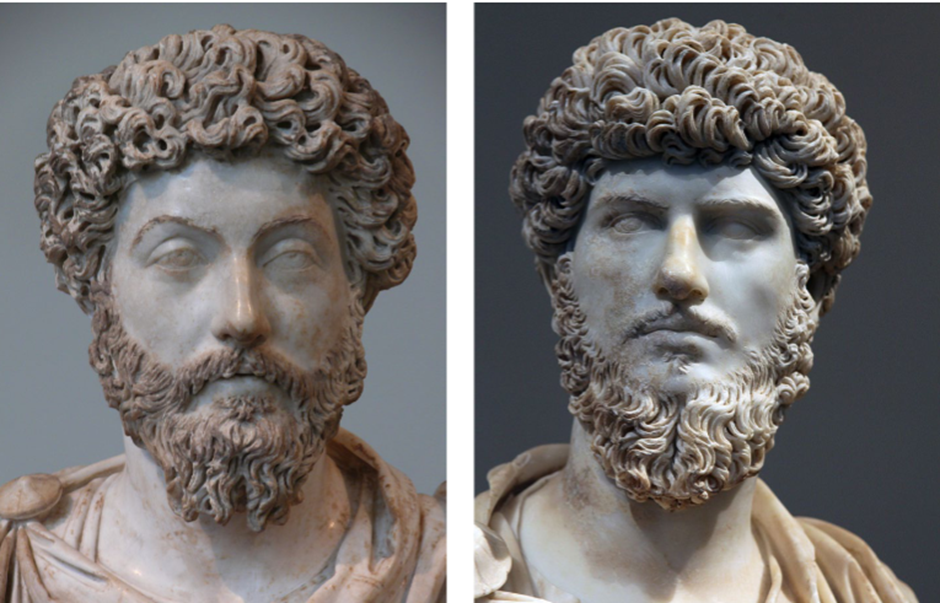
Left: Marcus Aurelius (Louvre); right: Lucius Verrus (Louvre)
Hair and beard have grown to accomodate local fashion
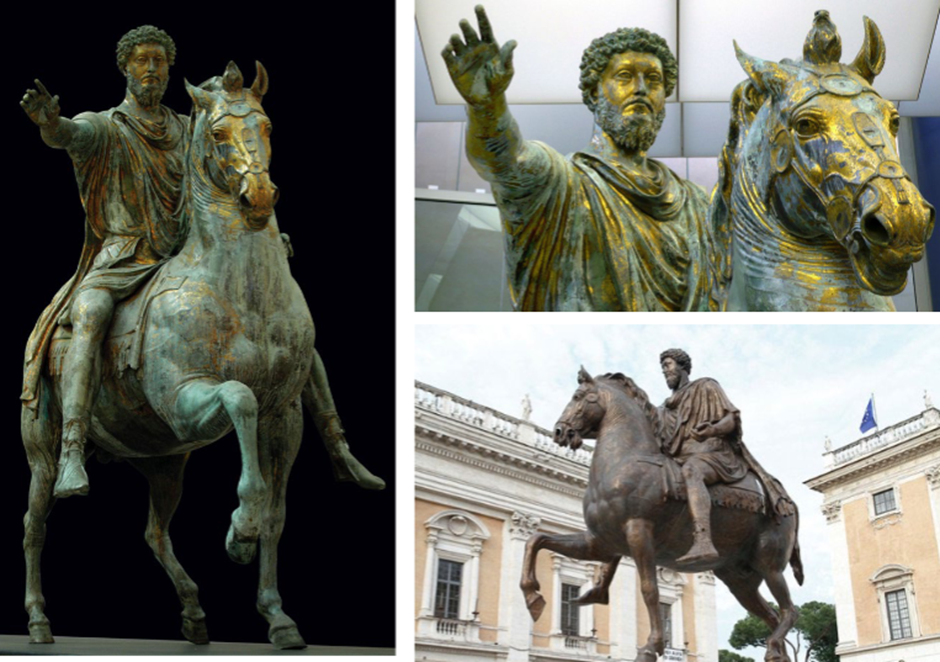
Marcus Aurelius (Capitoline)
Importance of military accomplishments in military imagery
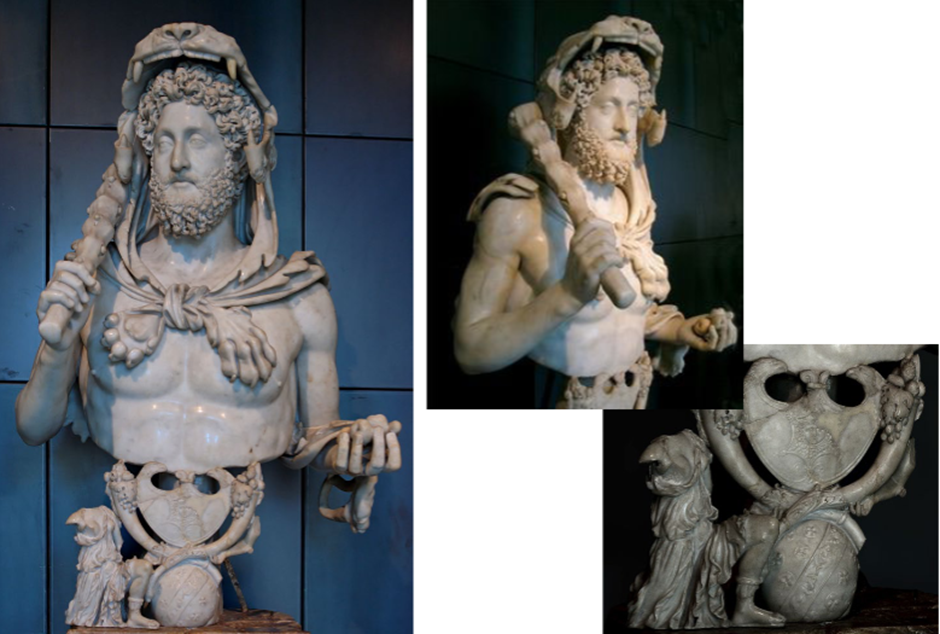
Commodus as Hercules (Capitoline)
Bad reputation
was trying to show he was the obvious successor of his father
Image often used to convey his bad traits but remember he circulated this
Shows Commodus looking like his father but dressed as Hercules wearing Numian lion skin (Hercules was greatest of all heroes - a mortal who became a god through his 12 labours)
Lion doesn’t obscure hair as he needed this to show relatedness
saying he has the same attributes as the greatest hero
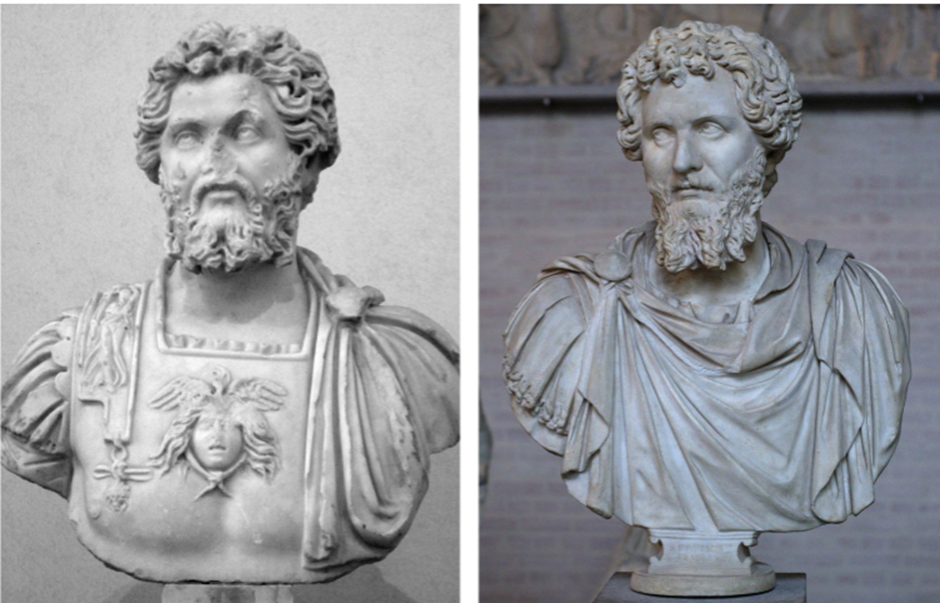
Septimius Severus (right from ROme, left from Munich)
Severans chose to connect themselves back to the Antonies (but not commodus) and so Septimius presents himself as another Antonine - long beard, curls
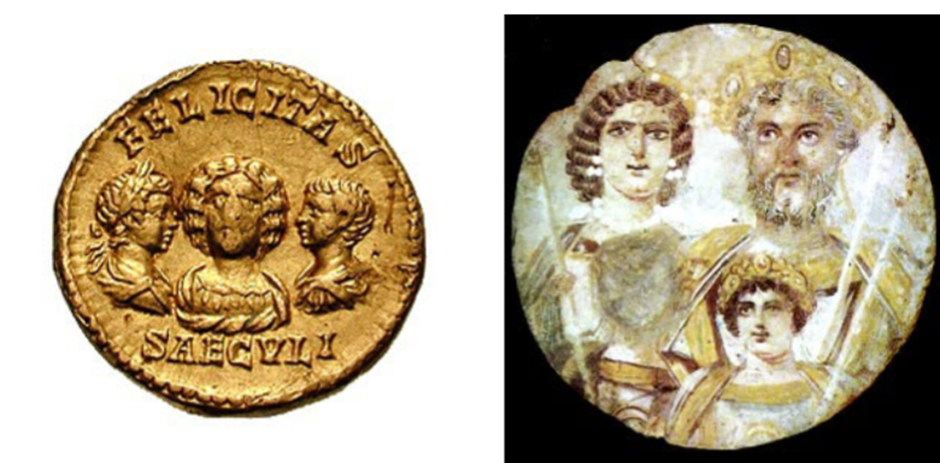
Left: Aureus of Septimius Severus, obverse Julia Domna between caracalla and geta
Right: painted tondo of the Severan family from Egypt
insciption - prosperity/blessedness of the age
WHen he comes to power severus has the advantage of having sons
more than any other emperor he emphasises his wife and family
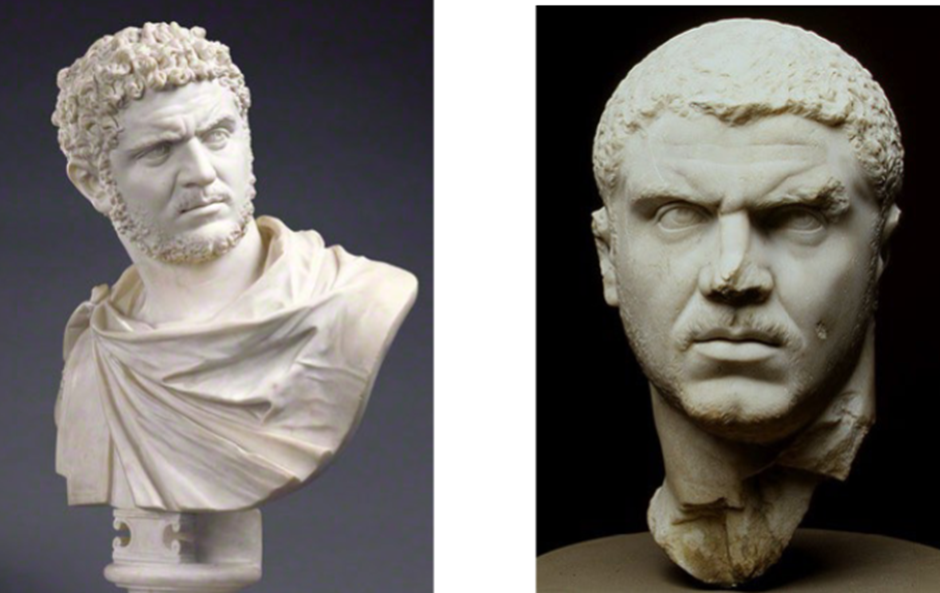
Caracalla
Adopts a highly militarized portrait - cropped hair, direct gaze
regularly refered to as evidence of his tyrannical nature
wanted to emphasise himself as a competent military leader, aware of what is going on (sharp gaze)
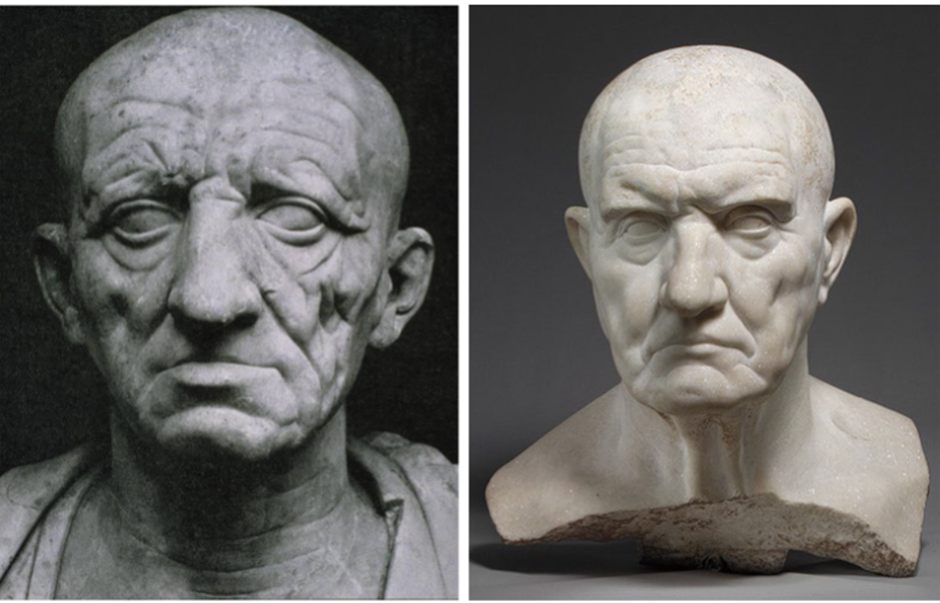
Left: Torlonia head, 1st c. BC (Rome); Right: unknown man, 1st c. BC (New York)
Both unknown men
funerary portraits
both presumably elite men, probably erected in a tomb/the family house
Versitic image
messages conveyed - serious men, proper romans, reached an advanced age
in rome you couldn’t reach advanced positions when you were young so age showed success
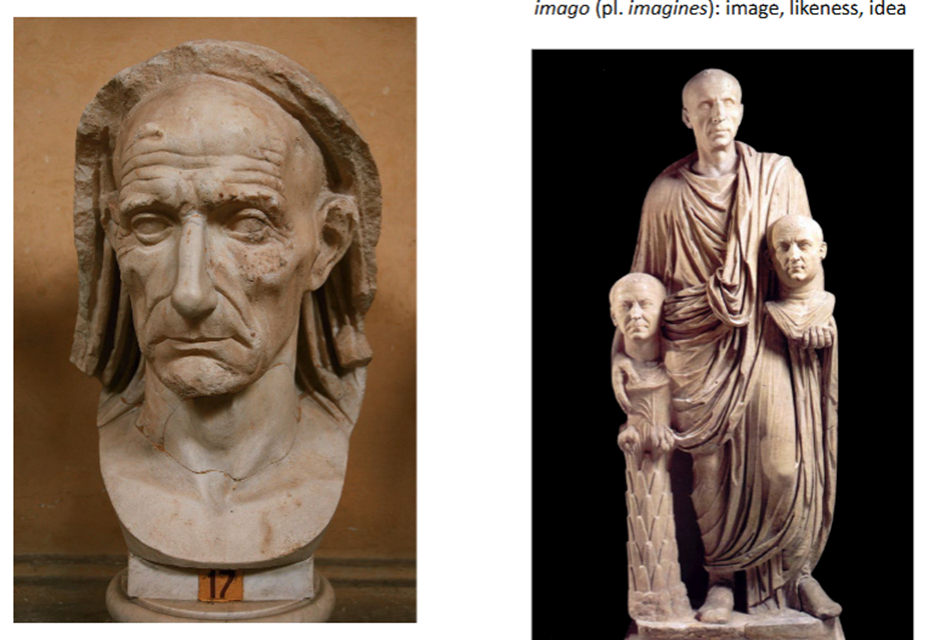
Left: unknown man, 1st c. BC (Rome); Right: ‘Barberini Togatus’, 1st c. BC (Rome)
Left: veristic portrait with toga over the head - piety, modesty, what you did whilst sacrificing
Right: family virtues. veristic image carrying two busts, presumably ancestors. showing both that he is a continuation of his ancestors, but also pious in respecting ancestors and continuing family traditions
Polybius VI.53
Shows public erection of statues as funerary tradition
shows they honour the virtues of the deceased
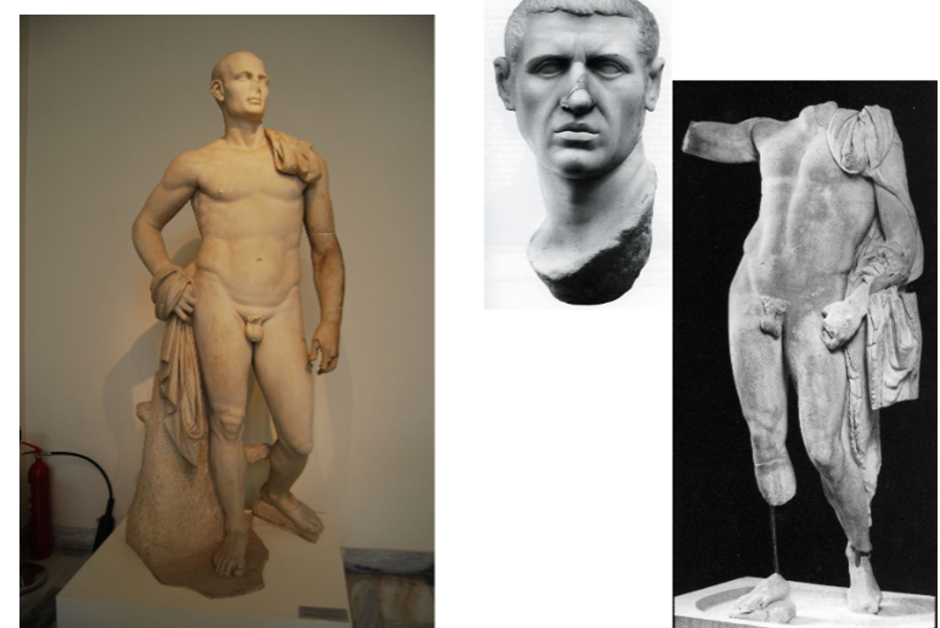
Left: Pseudo-Athlete from Delos, 2nd c. BC; right: statue of C. Ofellius Ferus, c. 100 BC from Delos
Shows body and head working together
Veristic style popular in this period
among roman elites a fashion developed for combining veristic portaits with heroic bodies communicating manliness
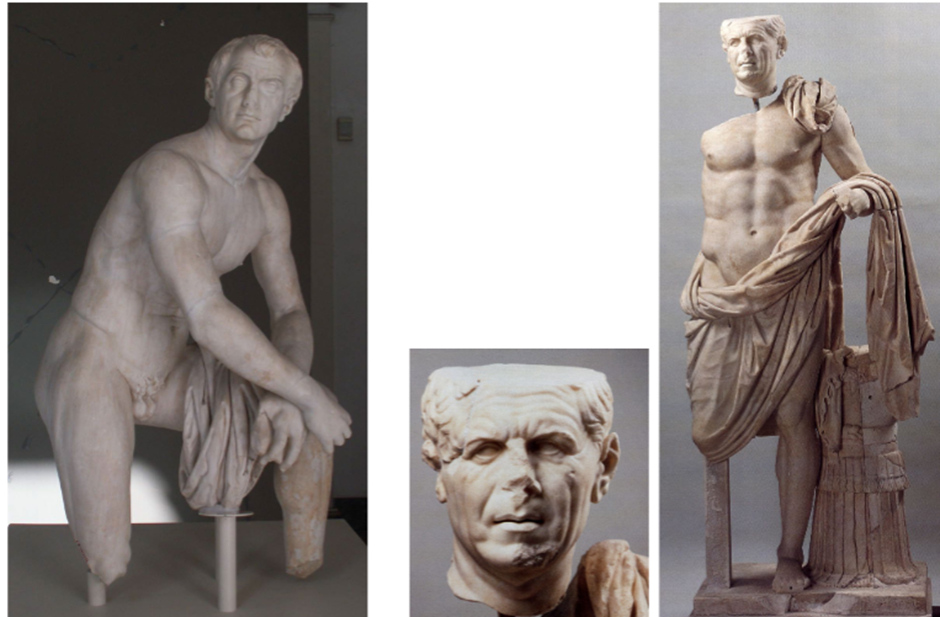
Left: Roman aristocrat from Cassino 1st c. BC;
right: Tivoli General from Tivoli, 1st c. BC
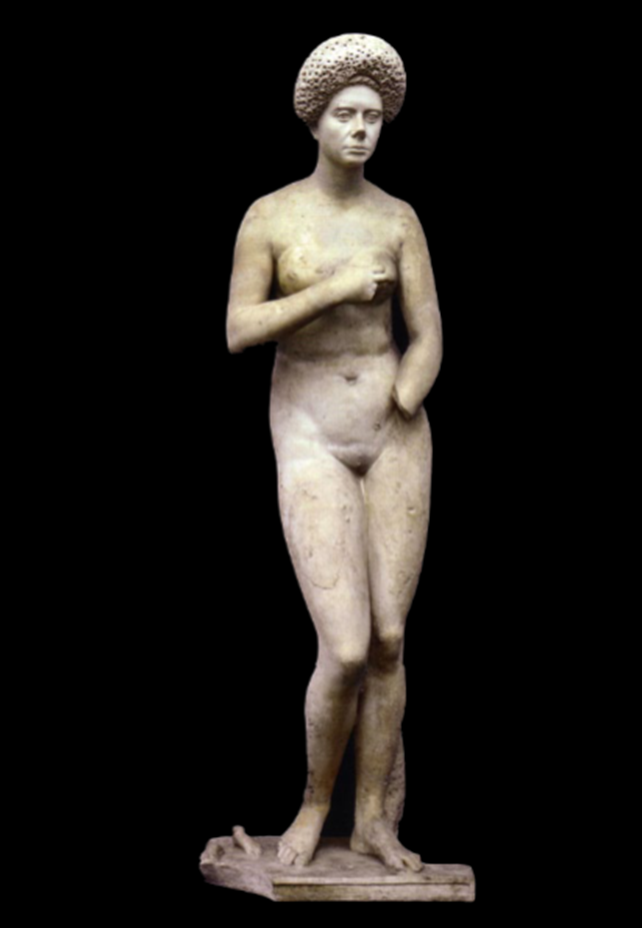
Portrait of a roman matron as Venus, 1st c. BC (copenhagen)
combination of styles to communicate different values
funerary portrait of an elite woman
head: expressed fashionable roman elite virtues, ornate hair but serious
Body: based on female statue type of Venus
shows her as a good, dutiful elite woman but also as beautiful and loving like Venus
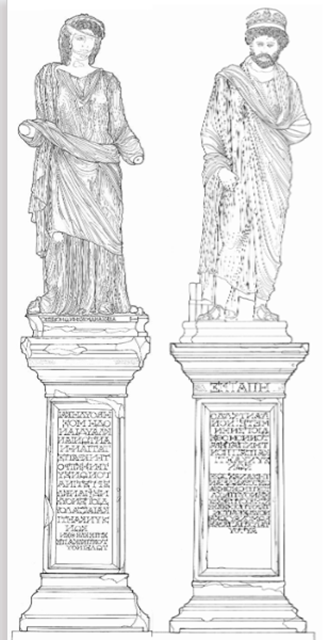
Portaits of Dometeinus and Tatiana from Aphrodisias
Displayed at the entrance to a council house
slightly larger than life size
Dometeinus - wearing himation, scrolls next to feet (made laws?), beard and curly hair (man of culture), hat is a crown with busts of emperors - priest of the imperial cult
Tatiana - fashionable long dress, hairstyle identical to Julia Domna, crown on head = priestess
Text for D - shows the family is so elite that his children are in the senate in Rome
Text for T - she paid for things in the city, cousin of senators
inscriptions convey what could’ne be shown with portrait alone
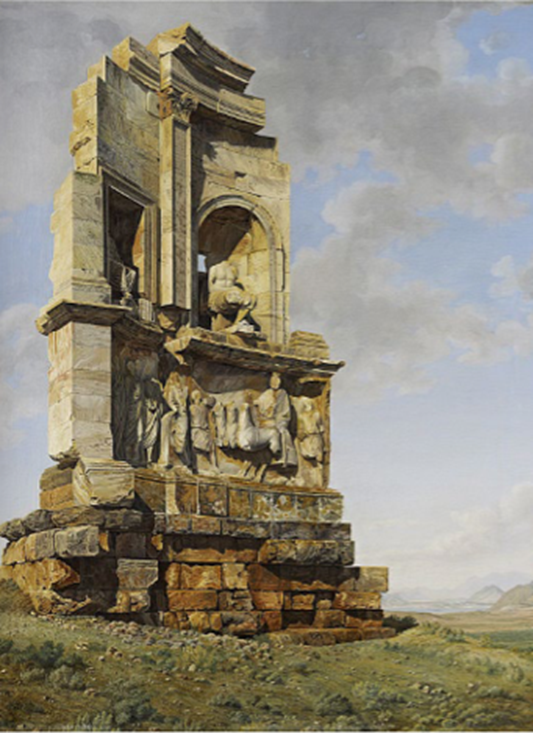
Monument of Philopappos, Athens, 2nd c. AD
funerary monument
erected in a prominent place
central statue depicts P. (likely image of a typical greek civilain man wearing a himation that has slipped down to his waist - common for philosophers so busy they’re not gripping it)
Greek man of culture
underneath statue is a chariot scene set in Rome
two identities communicated
bilingual inscription
Stresses his local identity and he is a voting memeber of Athenian council
Latin inscription: shows he is also a roman citizen, consul under Trajan
Greek inscription - traces lineage back to hellenistic kings - identity athenian elites would’ve been aware of

Columbarium x2 1st c.AD
for lower class people esp. slaves
still visible but not as promint
fit an urn or a small bust
often belonged to big households so employees could be interred in the same place
if you belonged to a profession and were part of a guild you could pay montly into a funeral fund and the guild would pay for your burial
Cinerary urns and altars
Give insight into lower classes
had inscriptions/imagery
common in 1st and 2nd c. AD when cremation was common
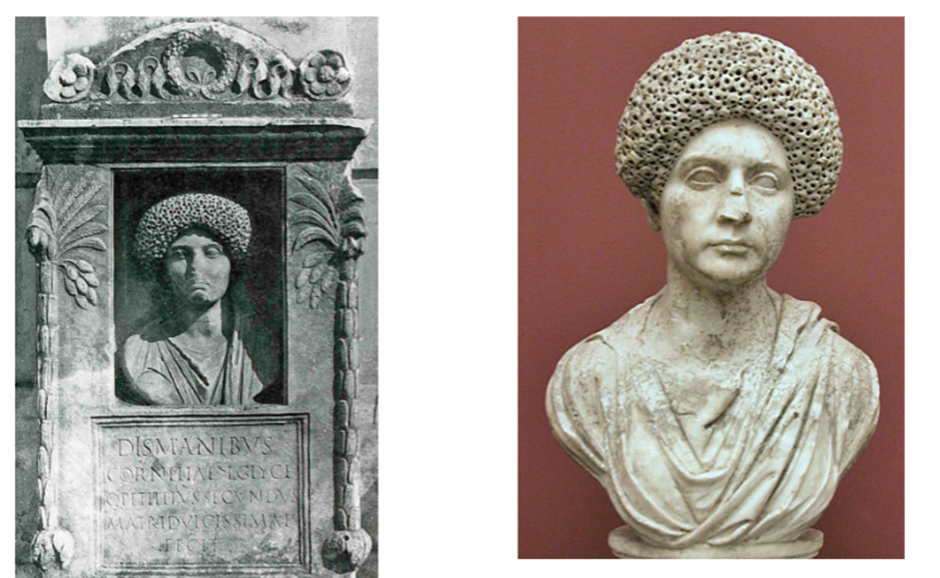
Tombstone of Cornelia Glyce 1st c. AD
Gravestones and funerary busts were popular in the east from 4th c. BC and in Italy from 1st c. BC - 2nd c. AD
Greek name, reference to heritage
fashionable hairstyle
shown as good, typical roman matron
Sarcophagi
Became popular from 2nd c. AD
poorer people would have smaller/wooden versions
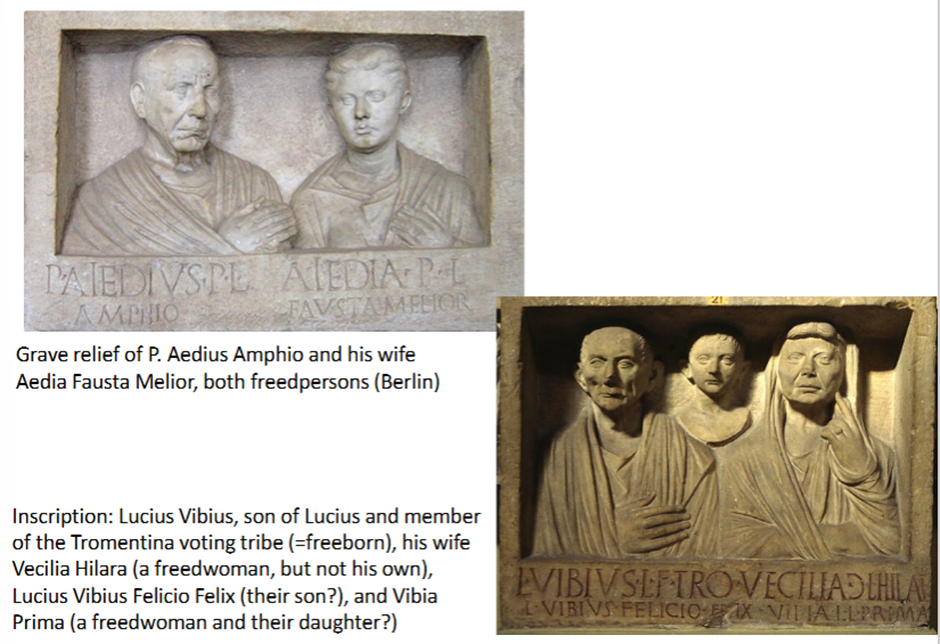
Grave relief of freedpeople
As grave reliefs were often the only artistic thing people would pay for in their lifetime they were very important
No rules on what was included
Freedmen often chose to include this information though
ex slaves being able to afford this showed social climg
Above: typical portrait
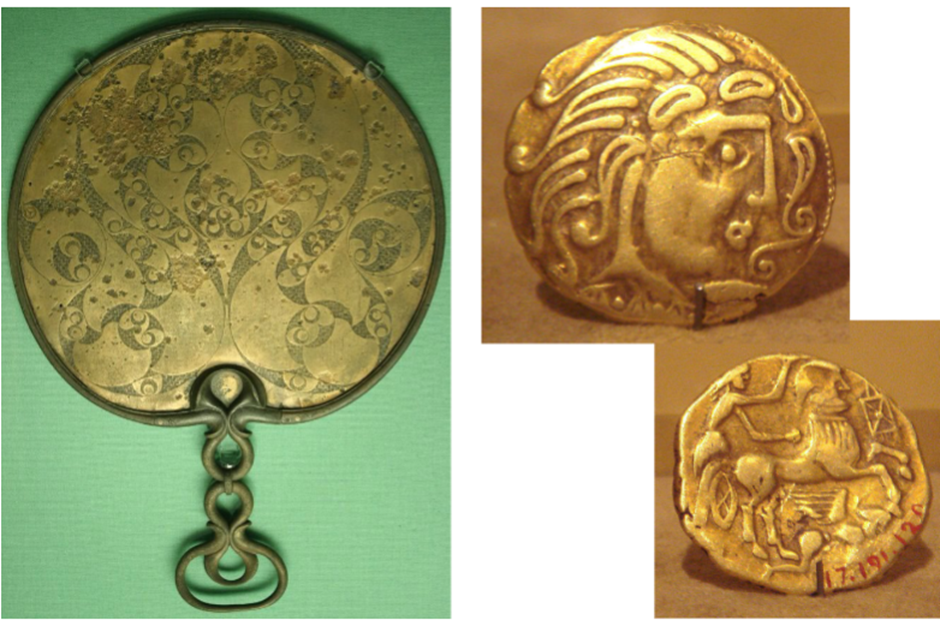
Left: bronze mirror from Desborough 1st c. BC-AD
right: gold coin of the Parisii 1st c. BC
we have a lot of metalwork esp. coins from pre-roman britain that give us an indication of what art was like before roman influence
emphasis often on pattern and the abstract
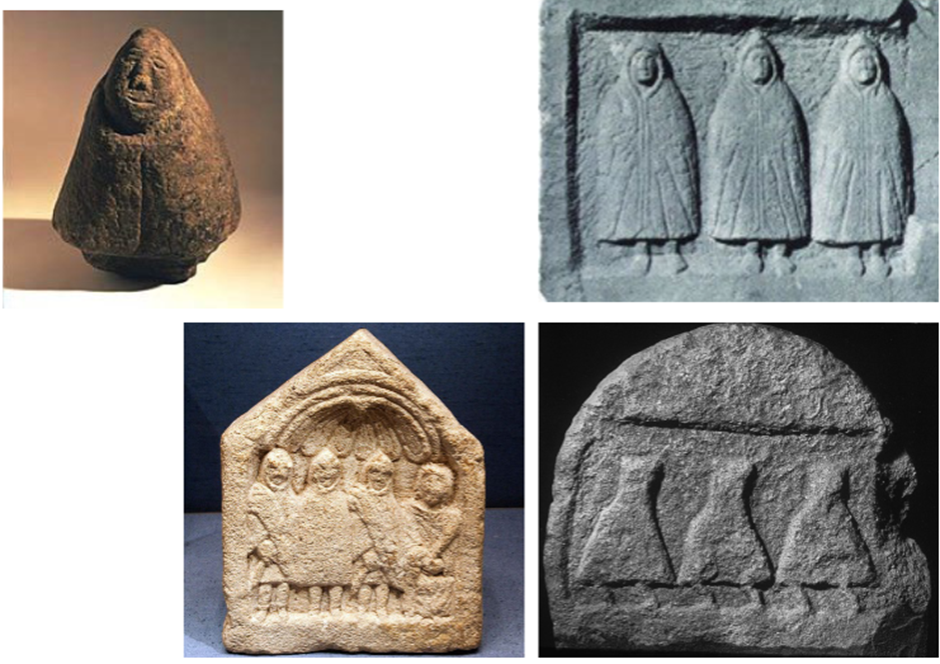
Statues of the Genii Cucullati, from various sites in Britain, 1st-4th c. AD
probs broadly same subject matter
represent a group of spirits that comes in threes, origin in pre-roman period sculptures probs dont survive
abstract
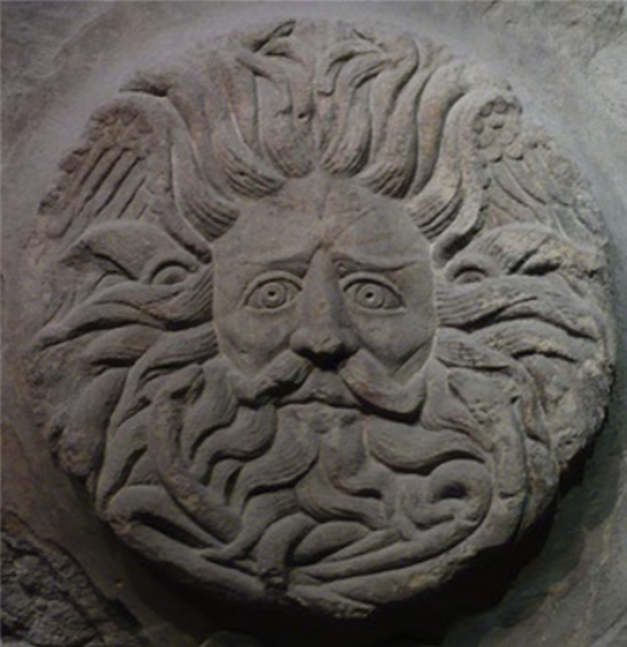
Water god/gorgon on the pediment of the temple at Roman Bath 2nd/3rd c. AD
On one of the biggest public buildings in roman britain
draws on graeco-roman subject matter (snakes in hair etc.) but is a bearded man not usual female gorgon
stylised
shows blending of local and roman art
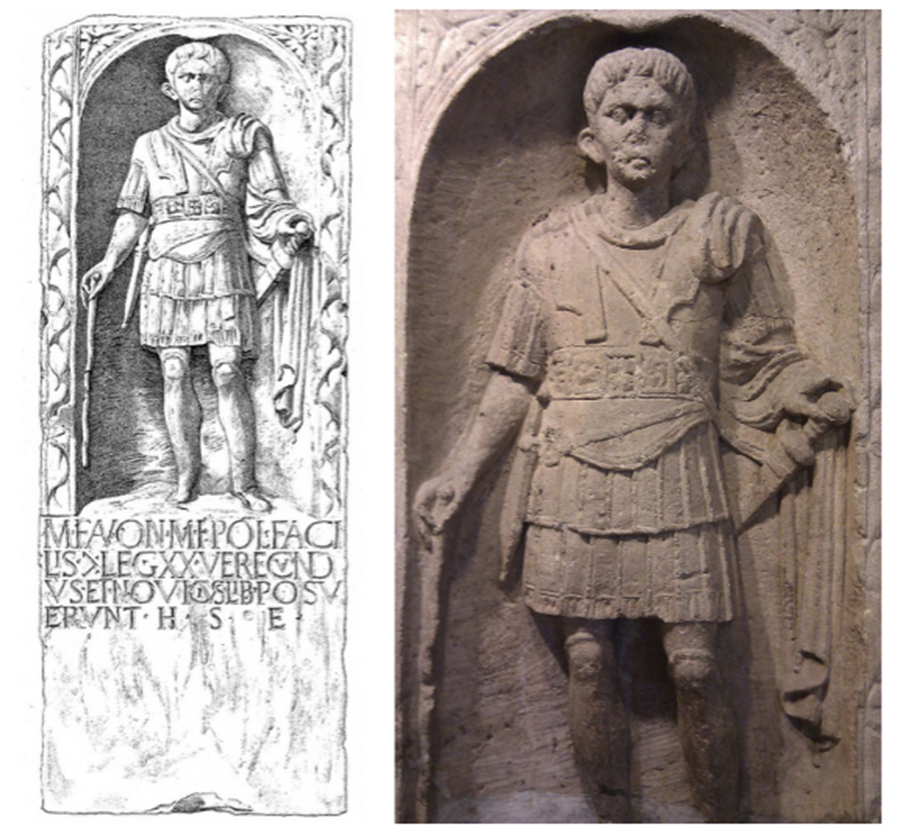
Monument of M. Favonius Facilis, 1st c. AD, Colchester
roman military monument honouring a centurion
influenced by contemporary Julio-Claudian imagery (sticky out ears) but overall carving betrays iron-age influences
roman soldier in britain but monument probably carved by a local
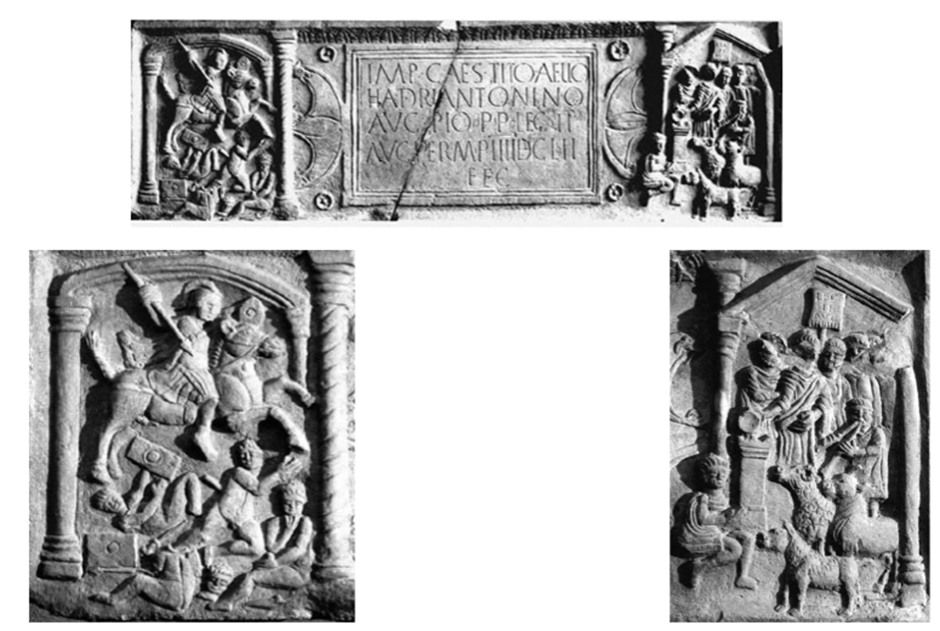
Bridgeness distance slab, 2nd c. AD
Slab on the Antonine wall
set up at regular distances to indicate how much had been built (imperialistic statement)
roman cavalrymen charging over barbarians - snapshot of what it meant to be a superior roman)
Sacrifice scene typical of roman militrary sacrifice but the style is more british
even animals are british looking
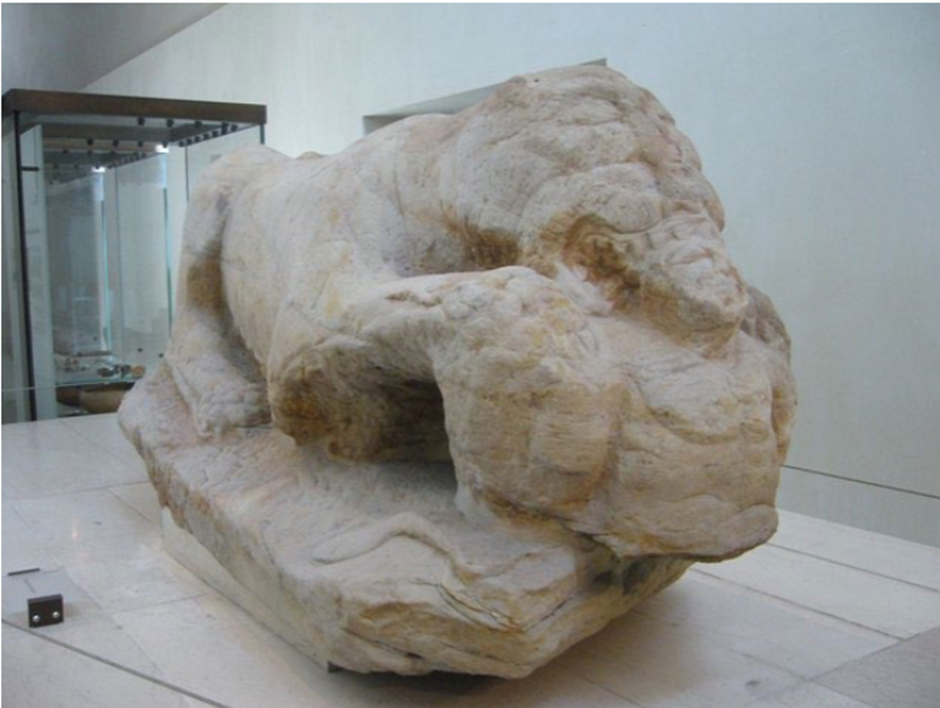
Crammond lioness, 2nd c. AD edinburgh
Originally adorned a roman tomb
demonstration of roman superiority and a protective marker
clearly portrays provincial style - stylised teeth
British mosaics
Elite romans built large villas in Britain and wanted to show themselves cultured - but even this long into roman rule local art still shines through
show local artistic traditions really mattered
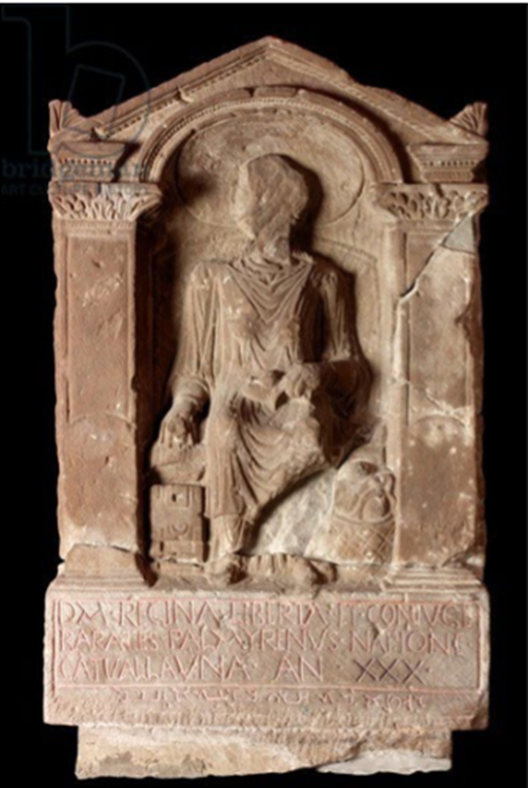
Funerary monument for Regina, freedwoman of Borates, south shields, 2nd c. Ad
Illustrates the mobility amongst certain populations
typical roman style funerary relief but unusual for roman britain
bilingual monument
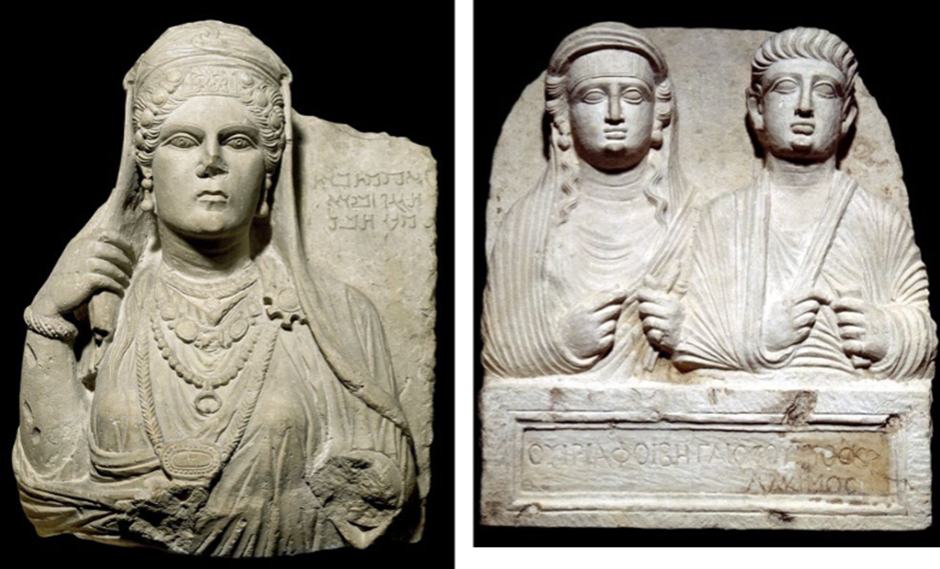
reliefs from Palmyra, 2nd c. AD left Aramaic inscr. right greek
Palmyra - extremely wealthy caravan city
Dominant style of Palmyrene art - frontal gazing, stylised eyes, repeating patterns, emphasis on jewellery - status symbol
mainly busts, females often wearing elaborate drapery and jeweleryy
inscriptions often with name and lineage
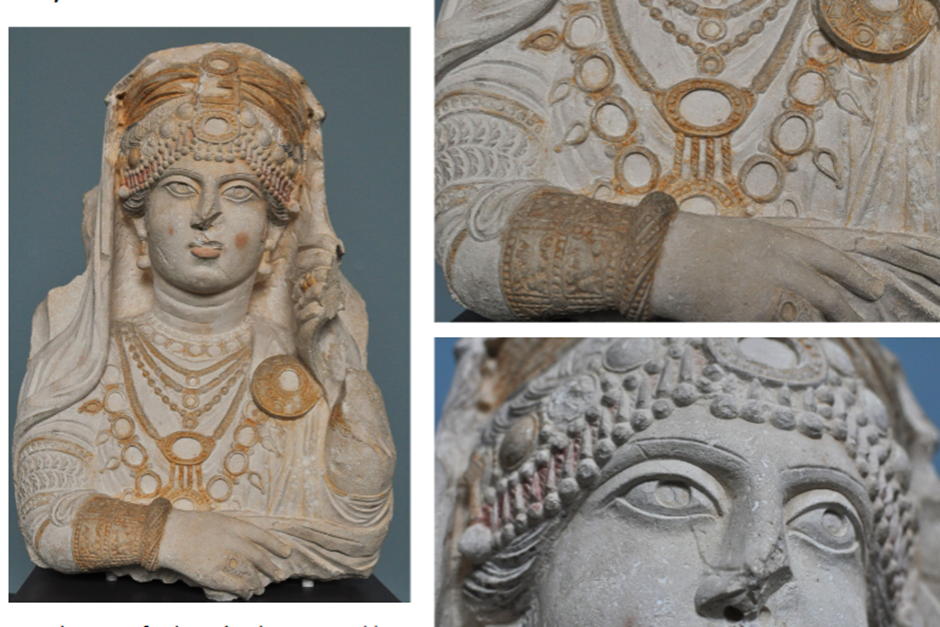
‘beauty of palmyra’ 2nd c. AD
Jewelerry
sytlised face
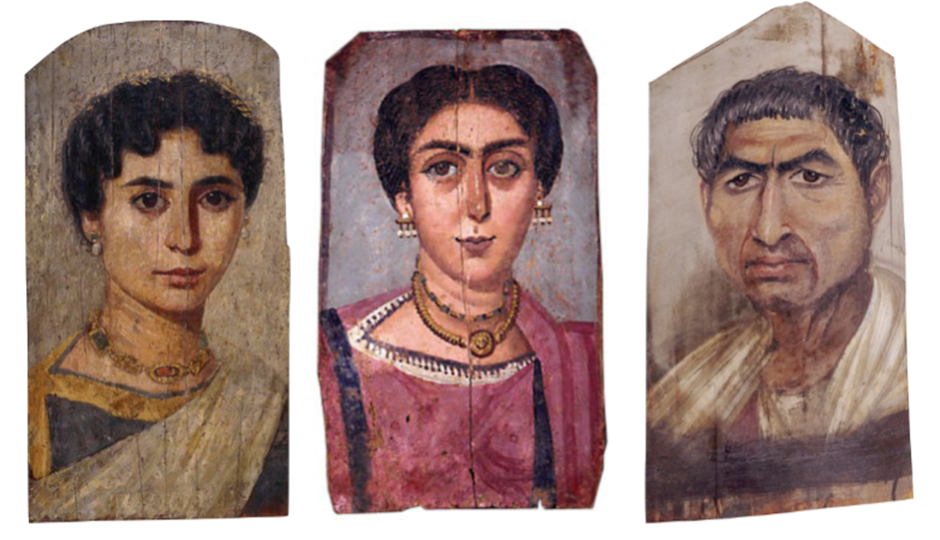
Mummy portraits from Fayuum, Egypt 2-3rd c. AD
Egypt had layers of identity to express as it was part of the empire but had been ruled by Greeks and Macedonians as well as local culture
survive because of dry conditions
wooden plaques inserted into mummy’s - very egyptian mode of burial - but portraits often displayed other aspects of identity
Often showed roman fashionable dress
Urban centres in the Roman empire
Many cities were close together
roman cities cluster along coastal zones and rivers
often in places strategic for agriculture and trade
no real written sources as to populations
20-30% of the population probably lived in cities

Priene and the model city in the hellenistic world
City in Asian minor that shows what Hellenistic city planners considered important
* Located on coast, founded on base of a hill - easier to defend
city planners laid out a rectangular grid despite challening typology with a city wall around the outisde
within the grid there are public building similair to typical roman city buildings even though this was a Hellenistic city
focus on civic buildings - self governed state so local government had great influence
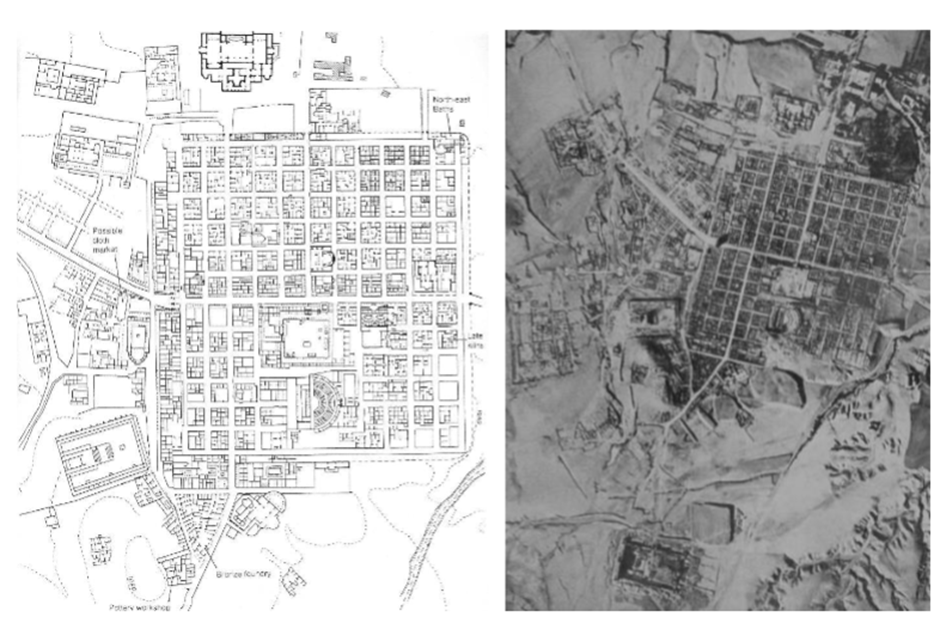
Trajanic colony at Timgad
Often called a typical roman city
created in 2nd c. AD under Trajan
example of a city established as a military colony with houses given to veterans of the military
Main part of the city layed out in the regular grid format
Rounded edges - mimicking a fort?
Arches define the edges
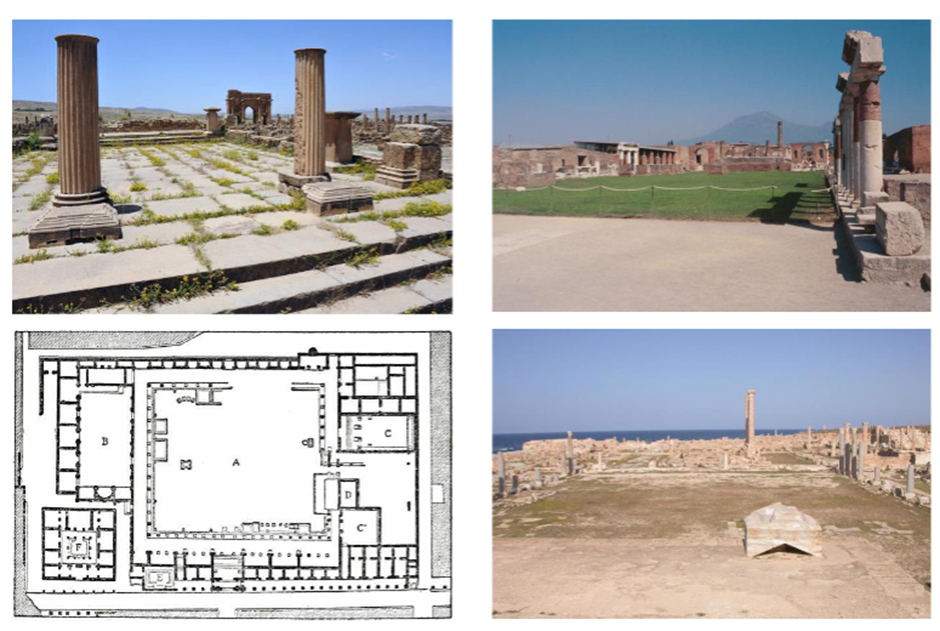
Left: forum at Timgad; right: fora at pompeii and Sabratha
forum = agora in greek cities
public market place, meeting place and where all key civic building are located
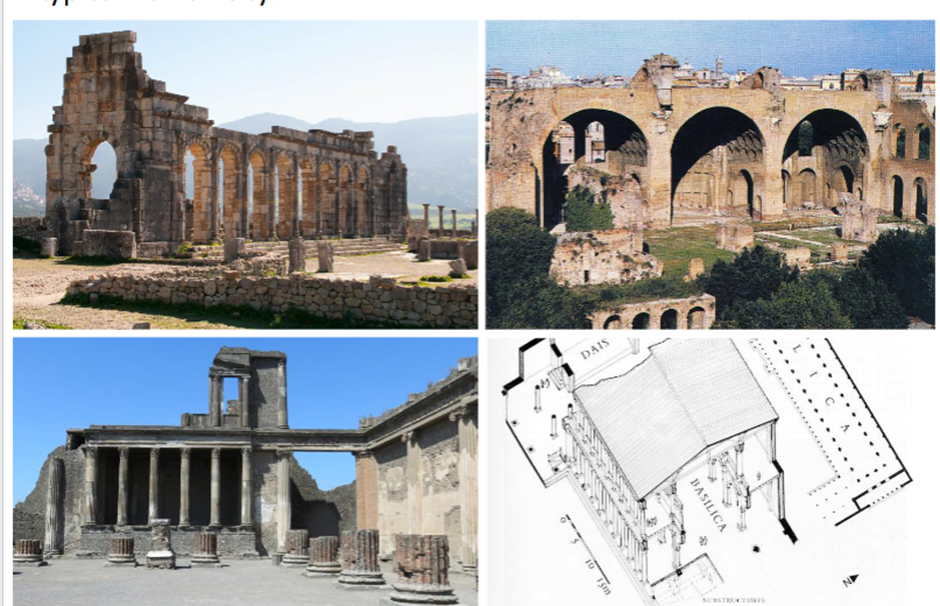
basilicas
One of the important buildings in the forum
a building with no clear parallels in the Greek world
meeting place, law courts etc.
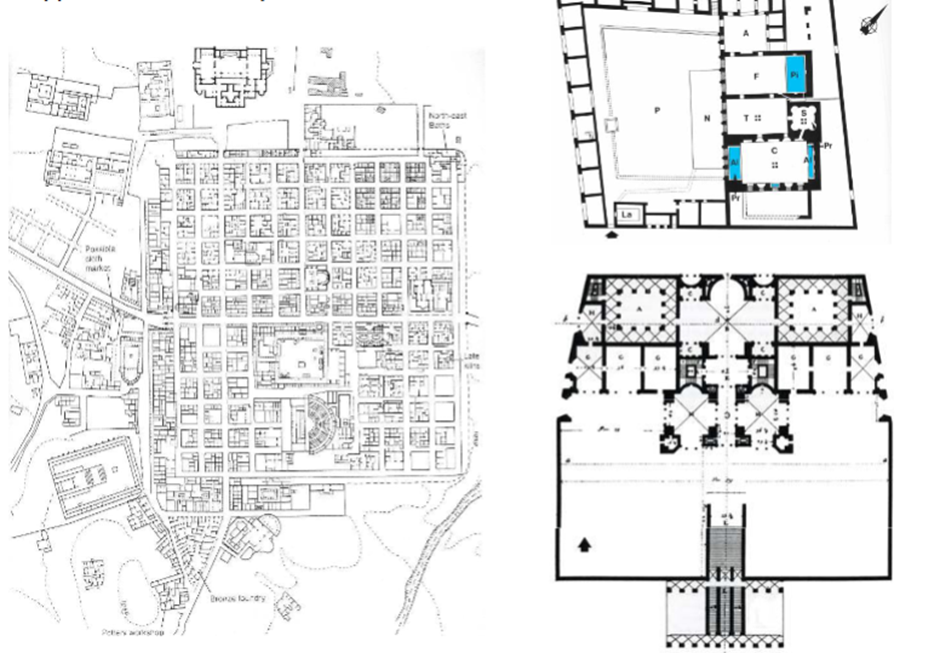
Central baths at Pompeii and Baths of Titus at Rome
bath houses were a key feature of Roman cities
same across the empire
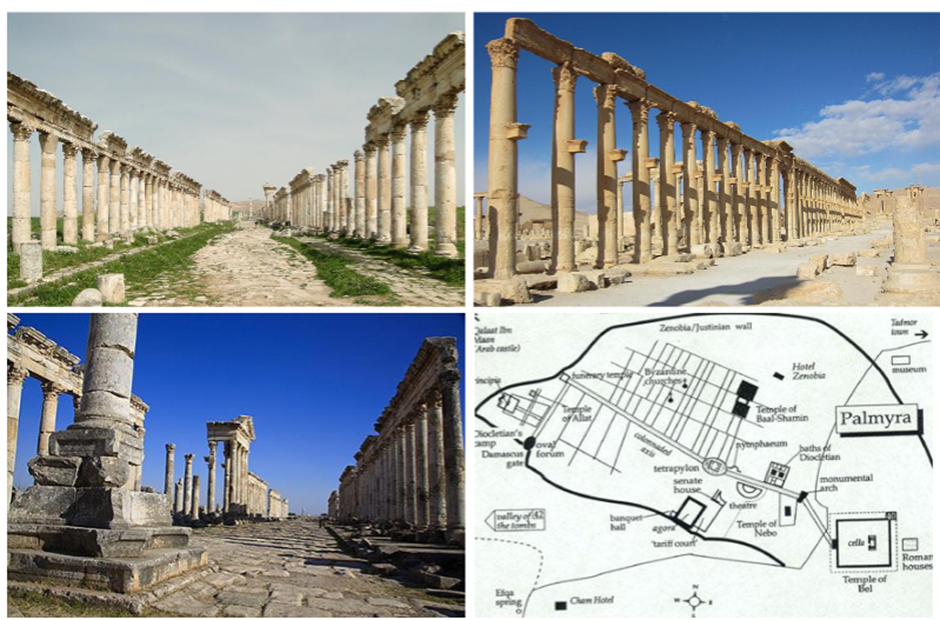
Collonaded streets typical of roman cities
emphasis on the main routes through the city
main part of the street designed for wheel traffic with pedestrians walking on raised platforms on the side
woukd’ve been covered to provide shade
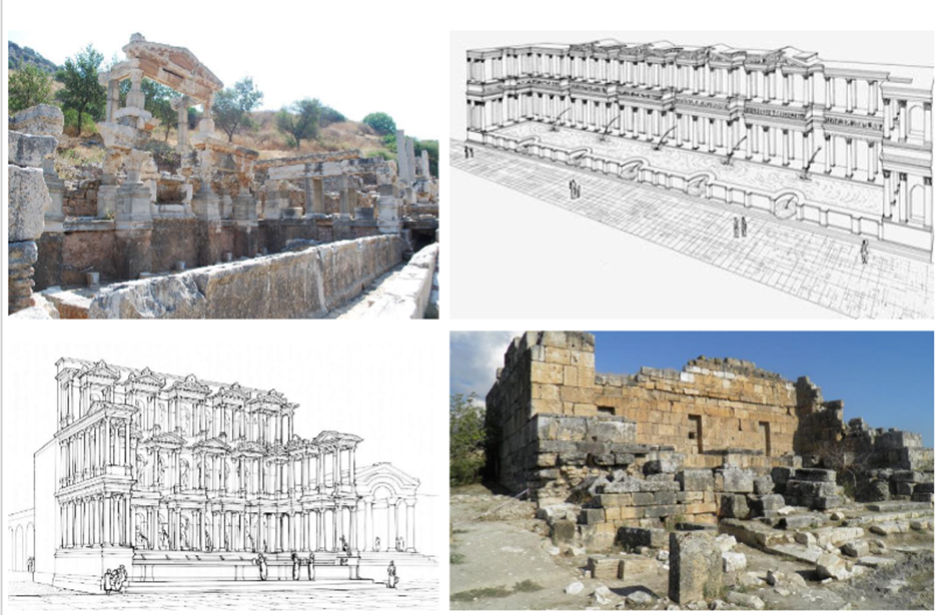
Nymphaeae at Ephesos
Fountains found in both smaller and larger scales
common feature of citirs
common in eastern parts of the empire - functional as well as decorative - only elites would’ve had access to running water in their homes